Nombre:
Castillo de Heidelberg
Otro:
Localización:
View Larger Map
Tipo: Militares
Categoría:
Foto:
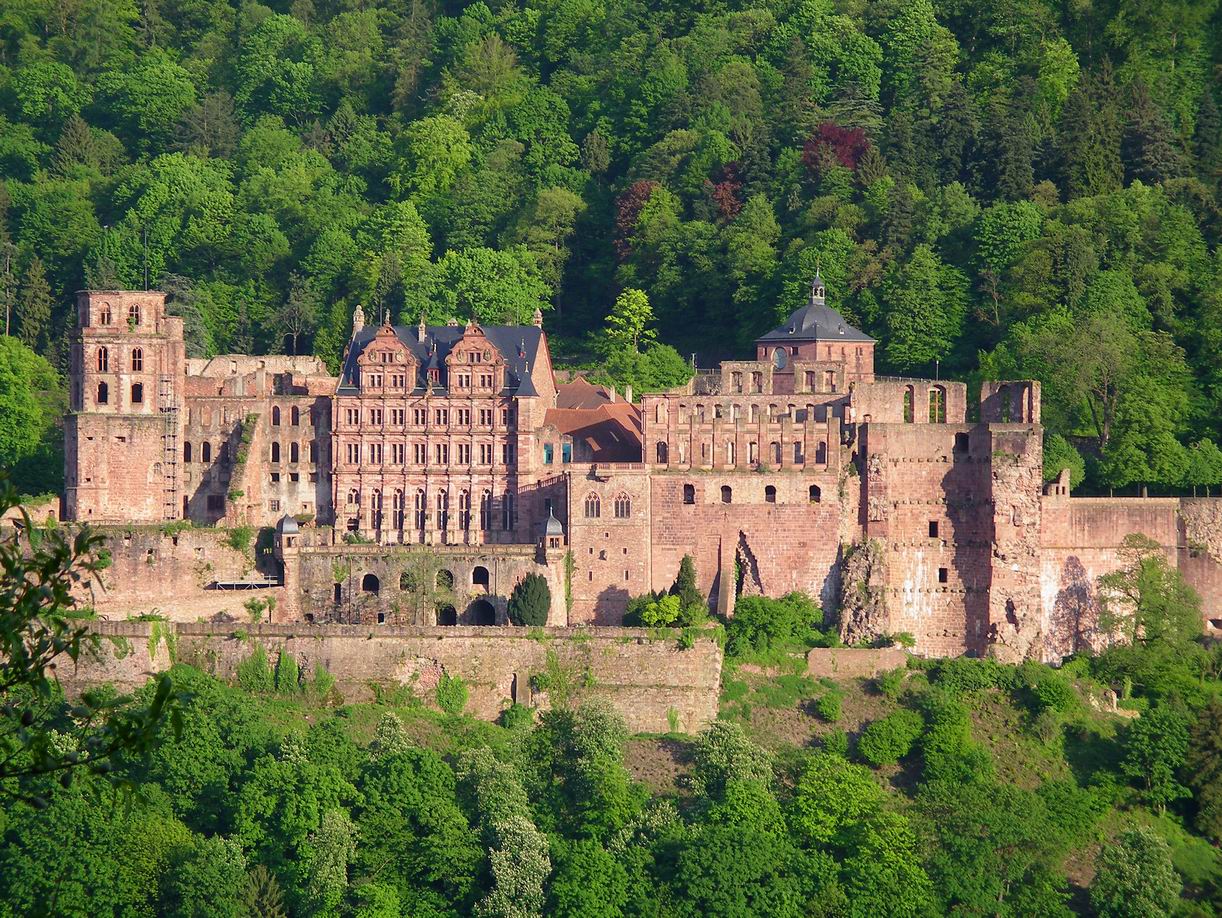
Voto:
Continente: Europa
País: Alemania
Localización: Heidelberg
Año: 1214
Estado: Destruido
Descripción:Castillo de Heidelberg es un palacio fortaleza, en ruinas, que tiene una mezcla de estilos gótico y renacentista. Fue construido en el siglo XII por la dinastía Wittelsbach de Baviera. Es muy interesante visitar el jardín, Hortus Palatinus, y el museo del palacio que guarda interesantes tesoros artísticos. La Torre Gorda, Dicker Turm, fue derruida durante la Guerra de los Treinta Años.
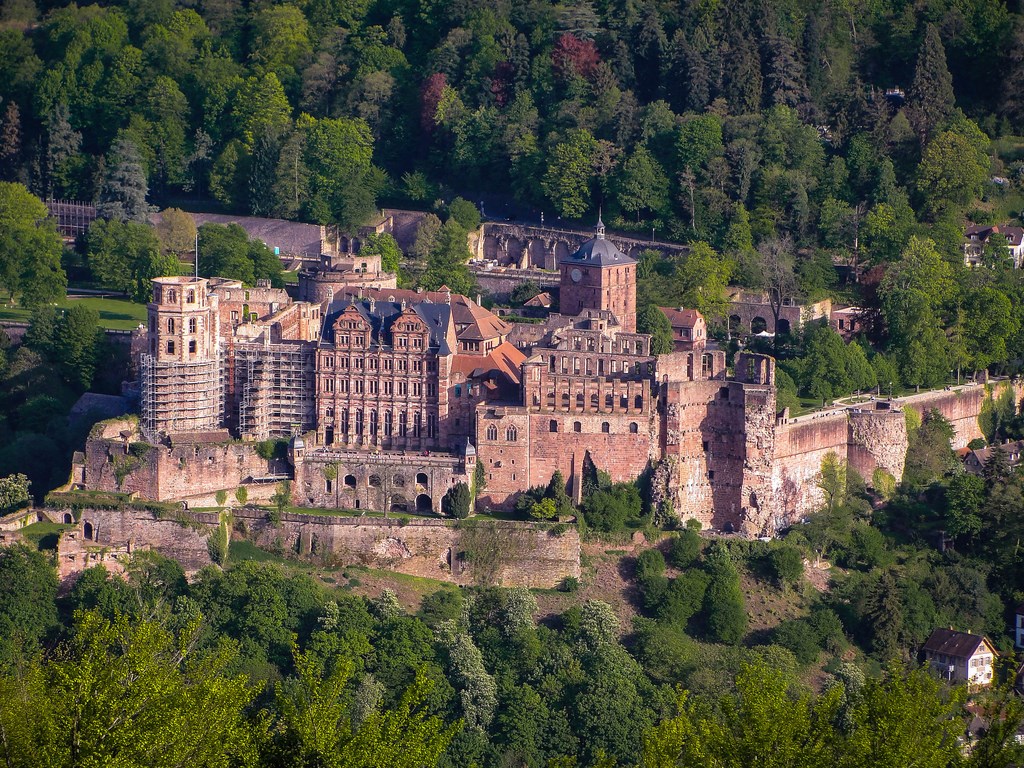
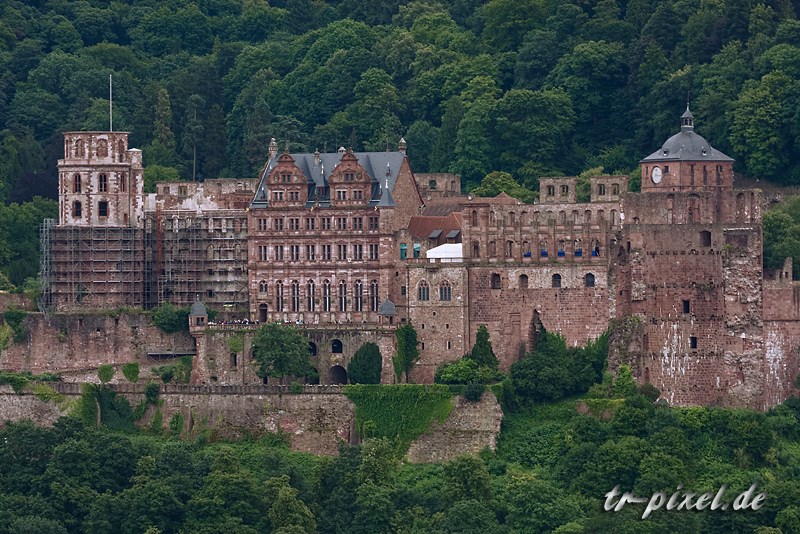
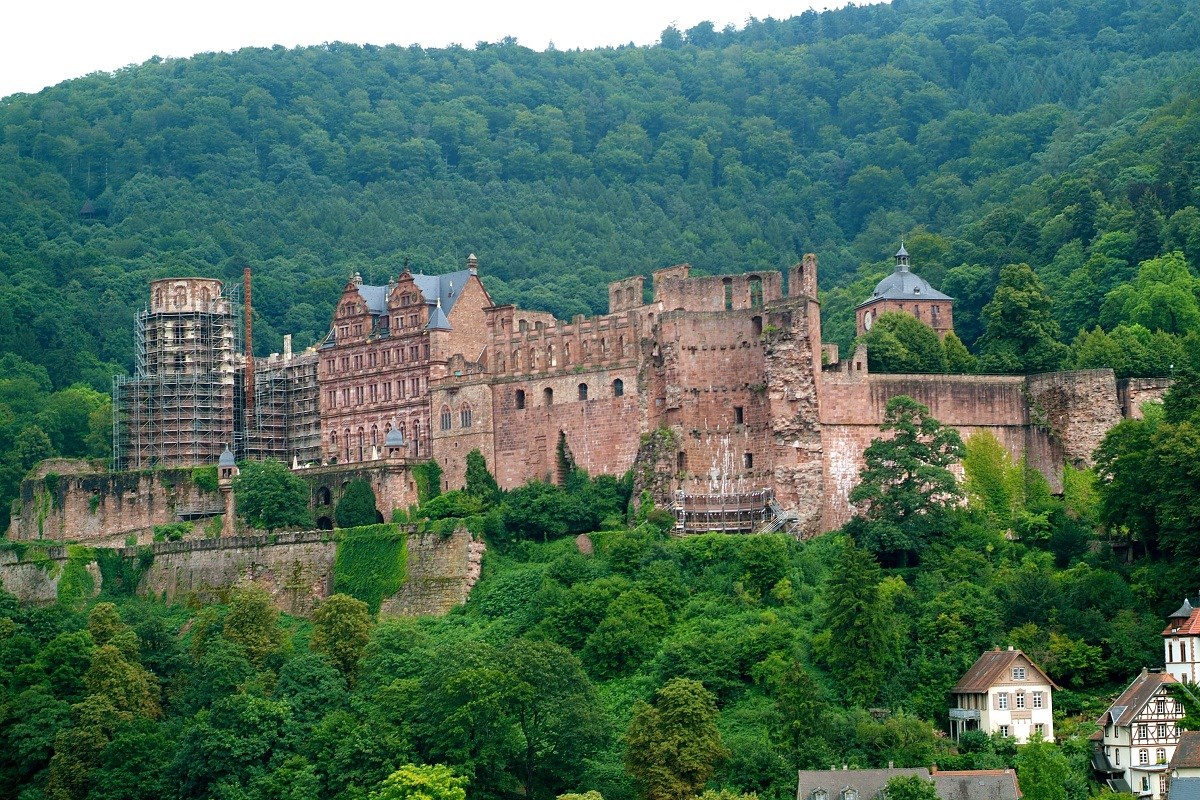
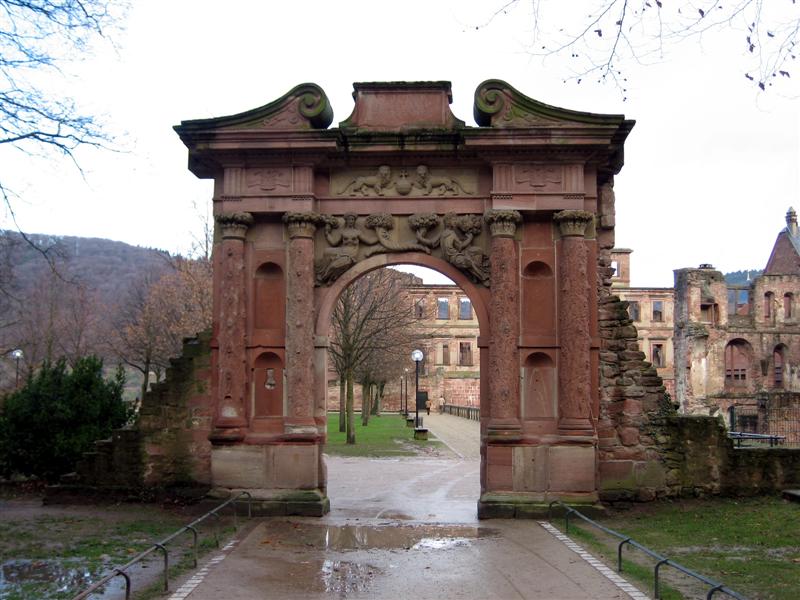
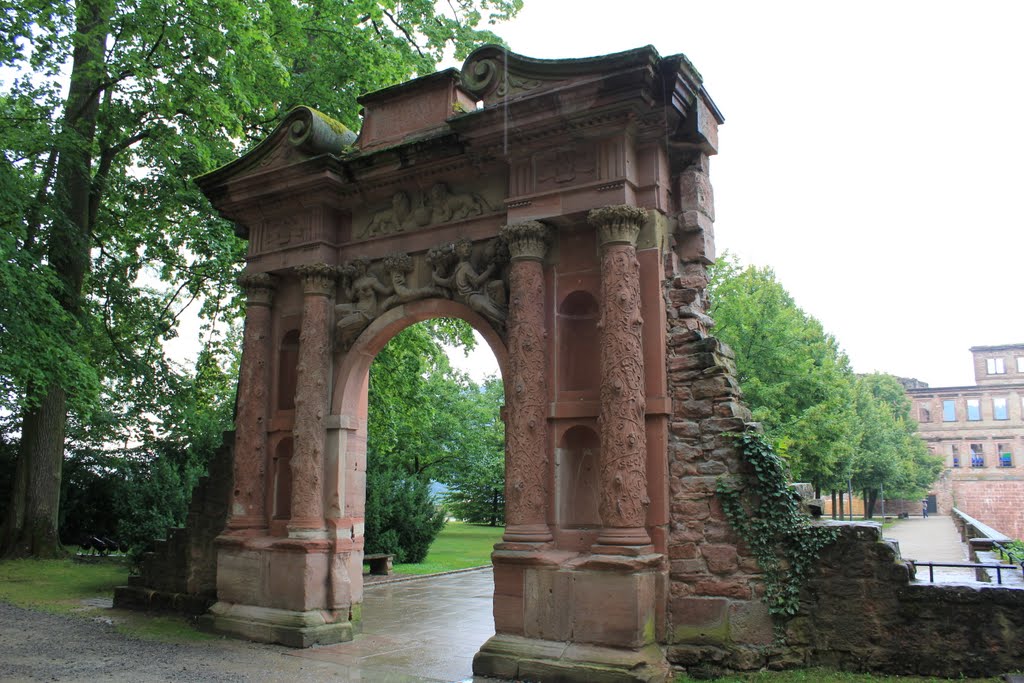
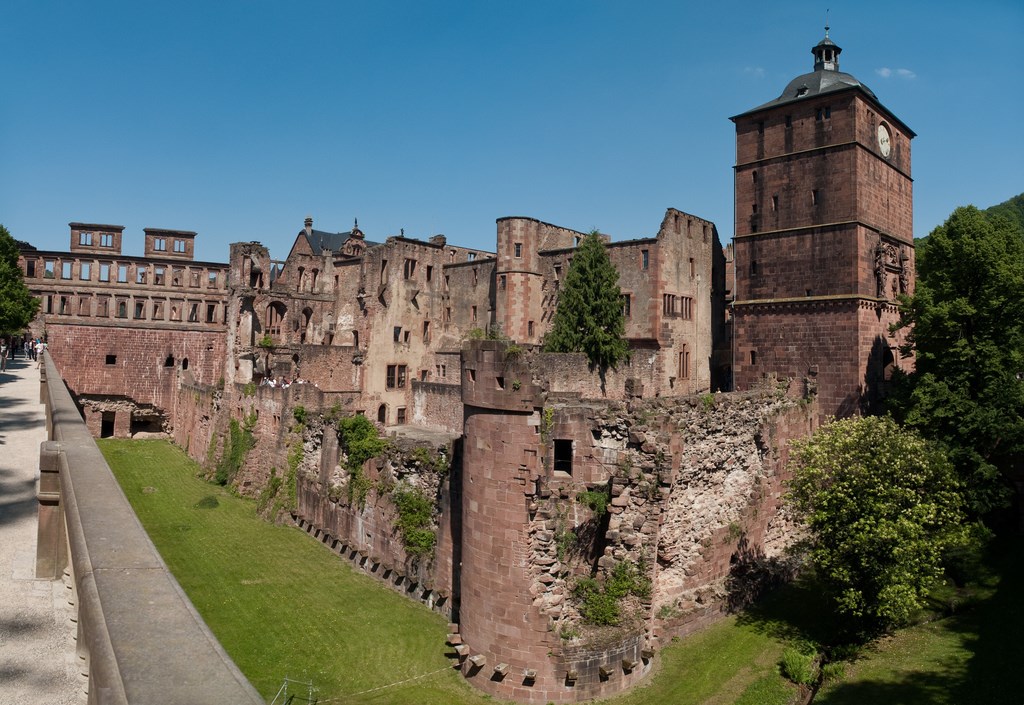
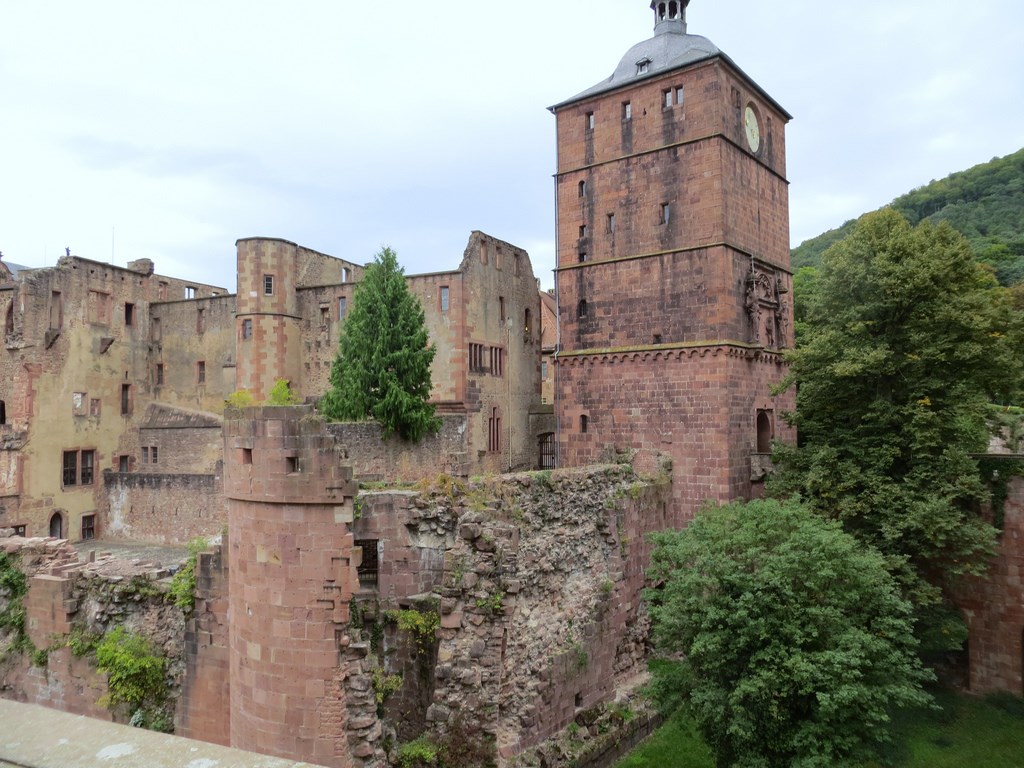
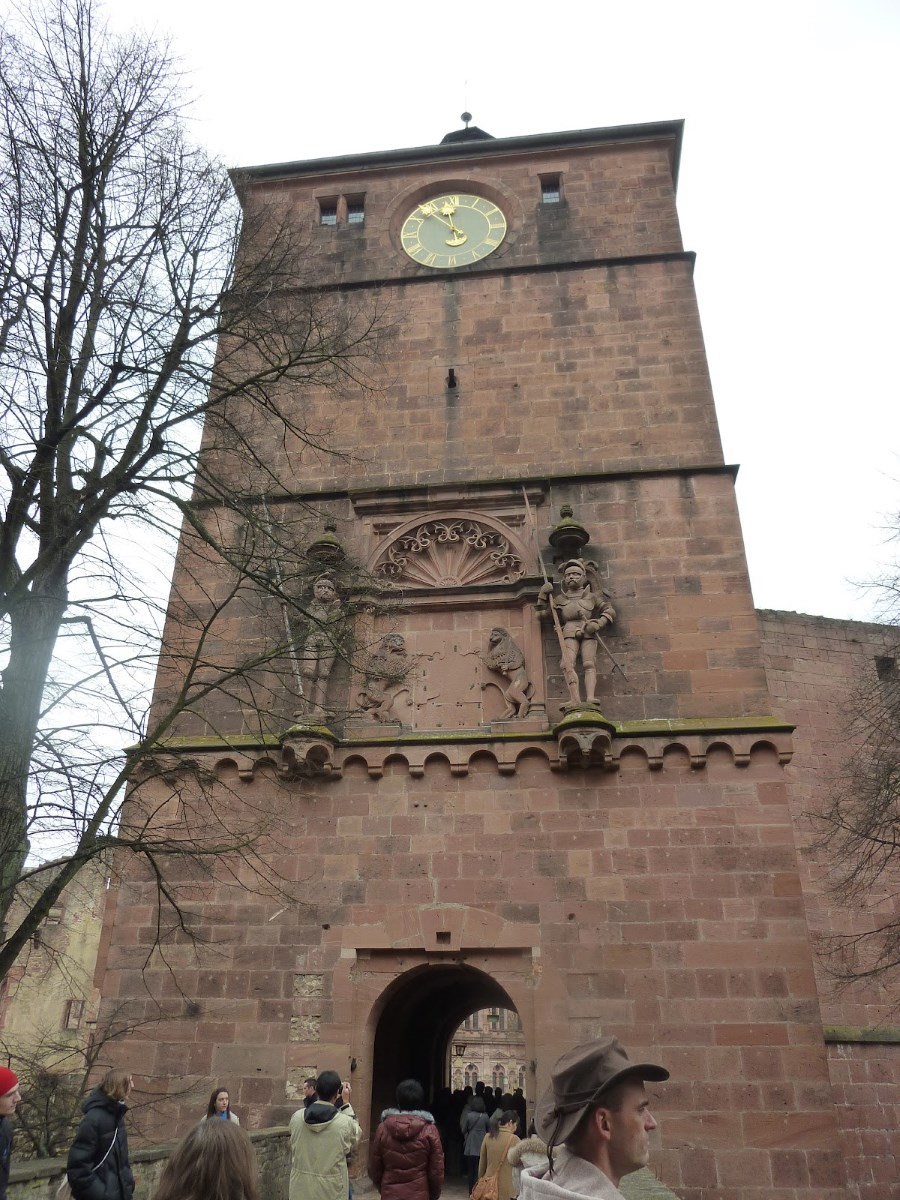
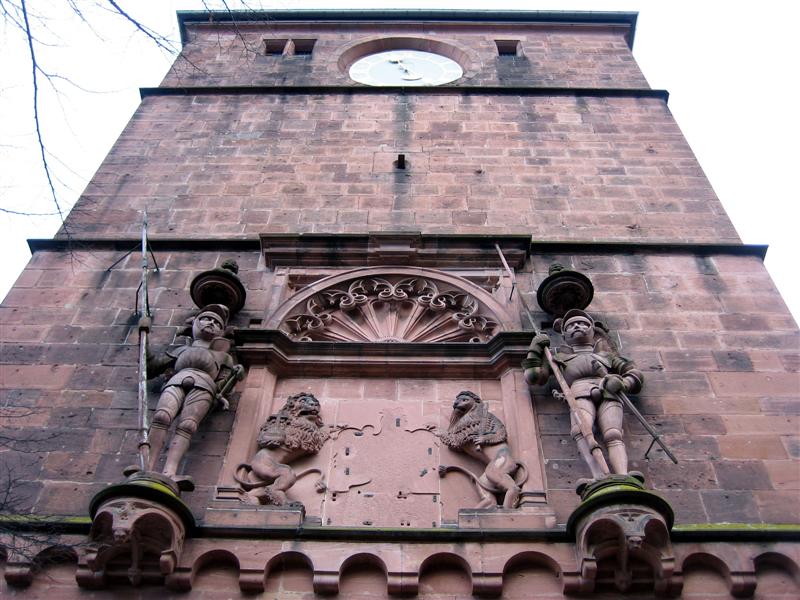
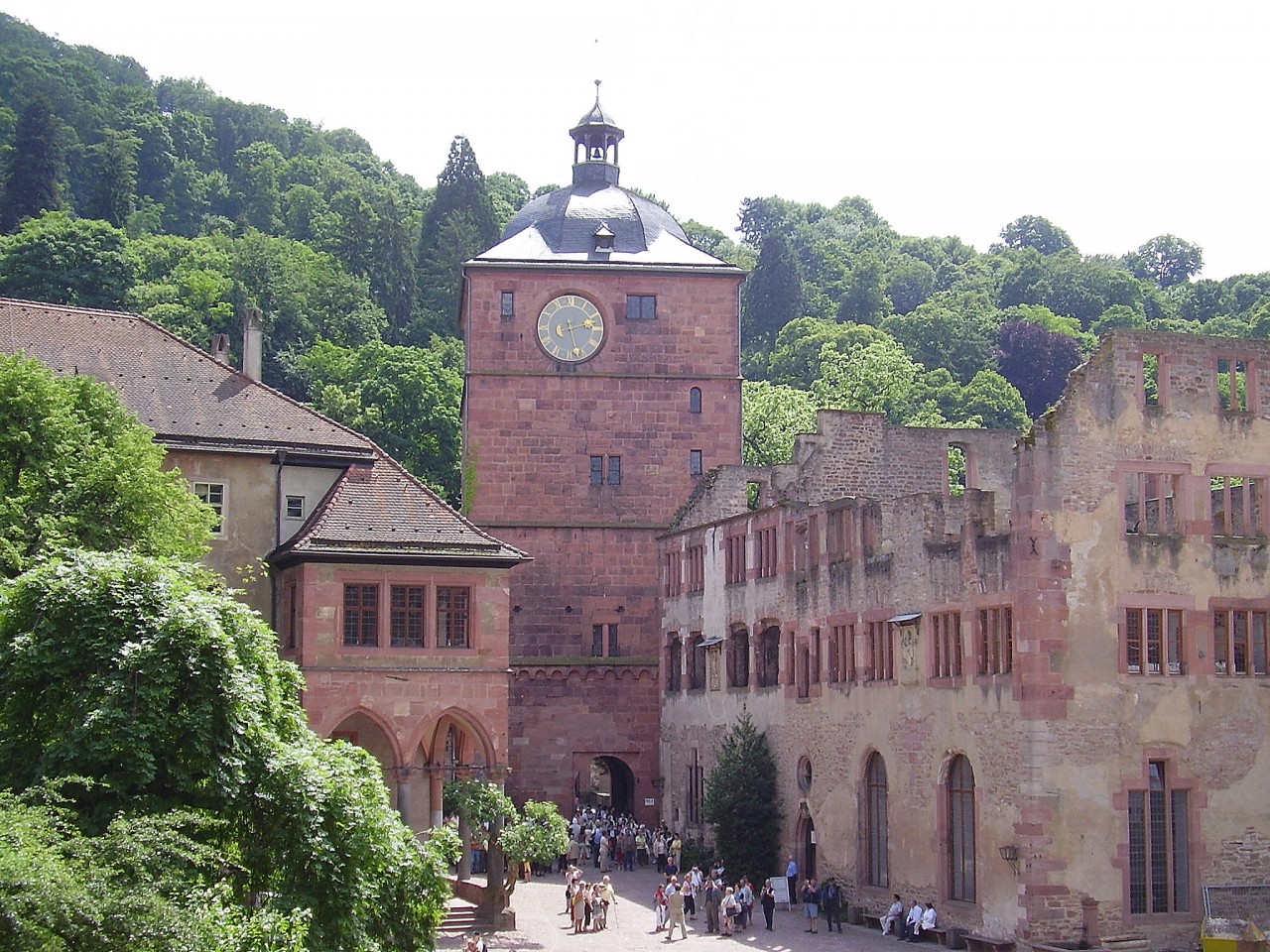
Este monumento es muy visitado pues cuenta con un objeto que despierta gran interés, el Barril Grande del castillo. Es un gran tonel de madera usado para contener vino que tiene 7 m de ancho, 8,5 m de largo y una capacidad de 222.000 litros.
Para acceder al castillo se puede optar por hacerlo con un funicular desde la estación de Kornmarkt o a pie por las escarpadas calles. Periódicamente se celebran festivales de teatro llamados Schlossfestspiele y bailes, Ball der Vampire.
En la Markplatz, la plaza del mercado, encontramos la fuente de Hércules; una iglesia del siglo XV, Heiliggeistkirche, de estilo gótico; el Ayuntamiento y la Farmacia Real que es actualmente un afamado restaurante.
http://internacional.universia.net/europa/ciudades/alemania/heidelberg/guia-ocio-heidelberg.htm
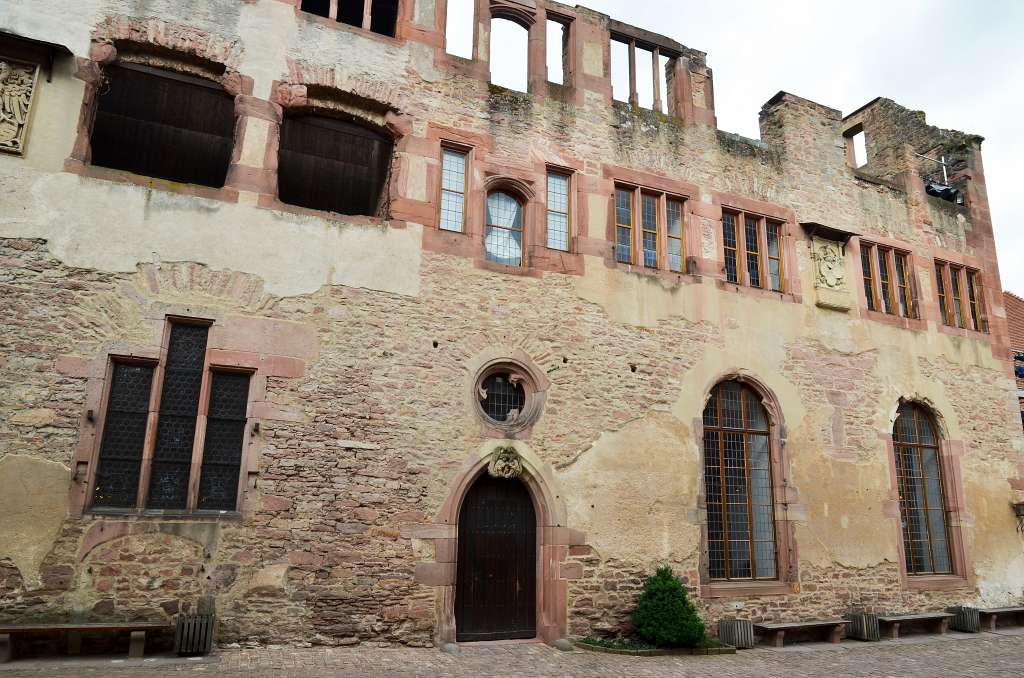
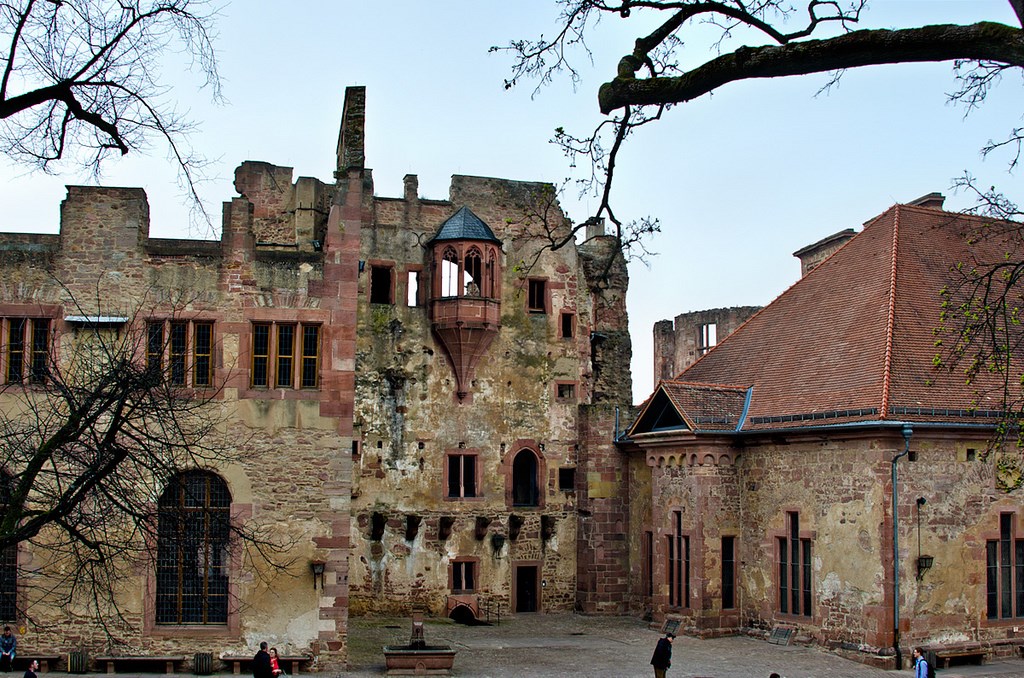
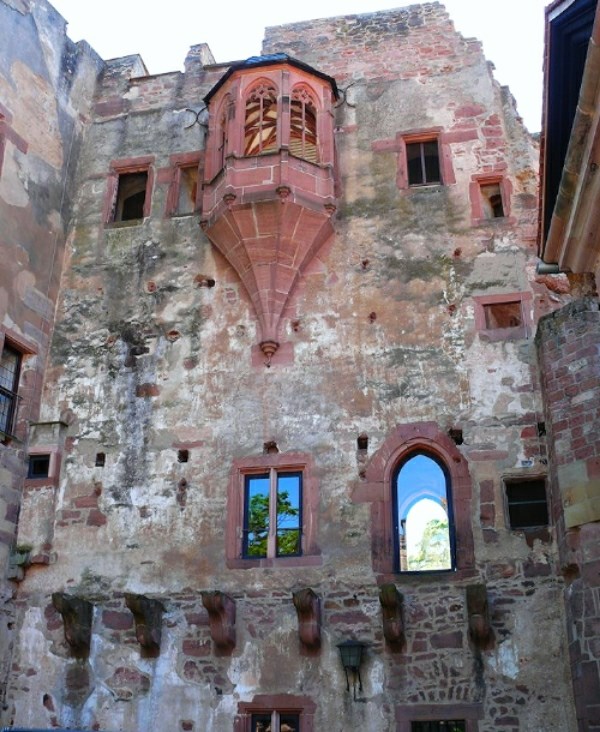
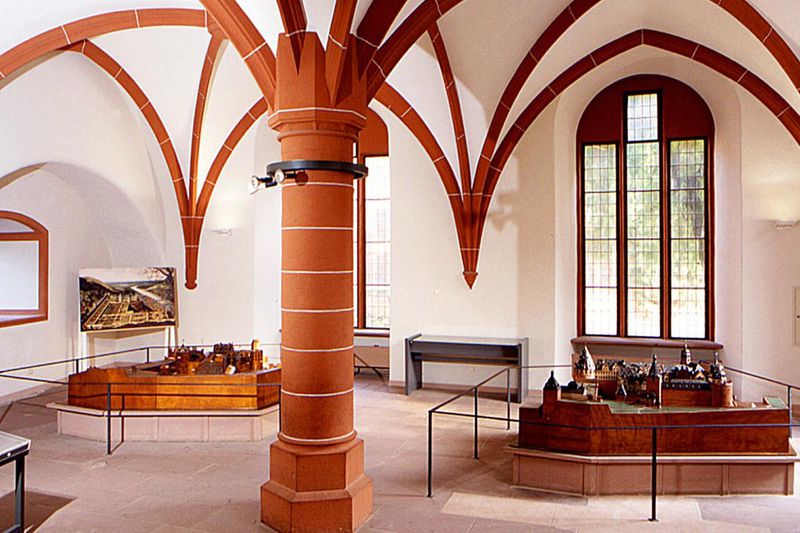
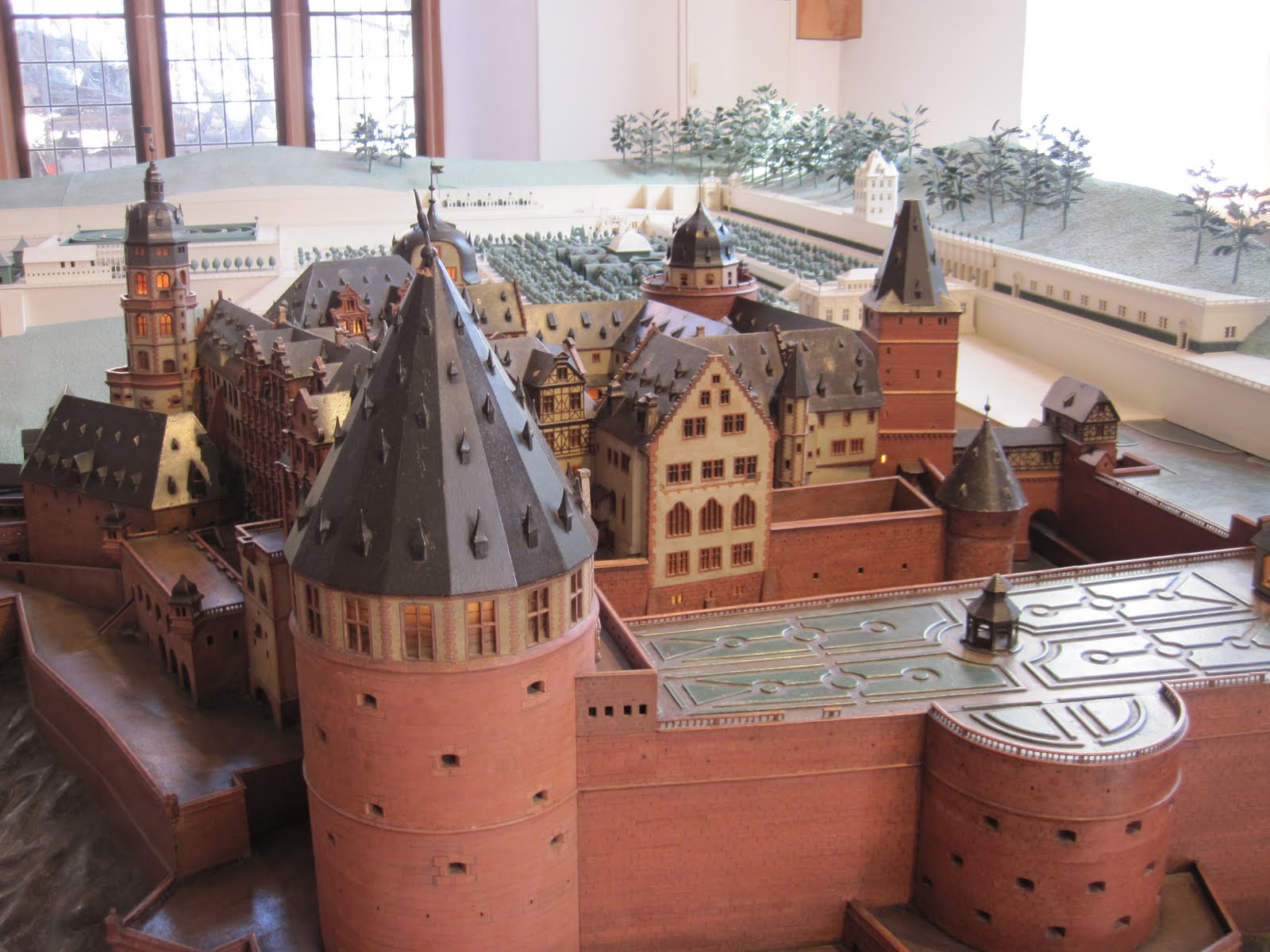
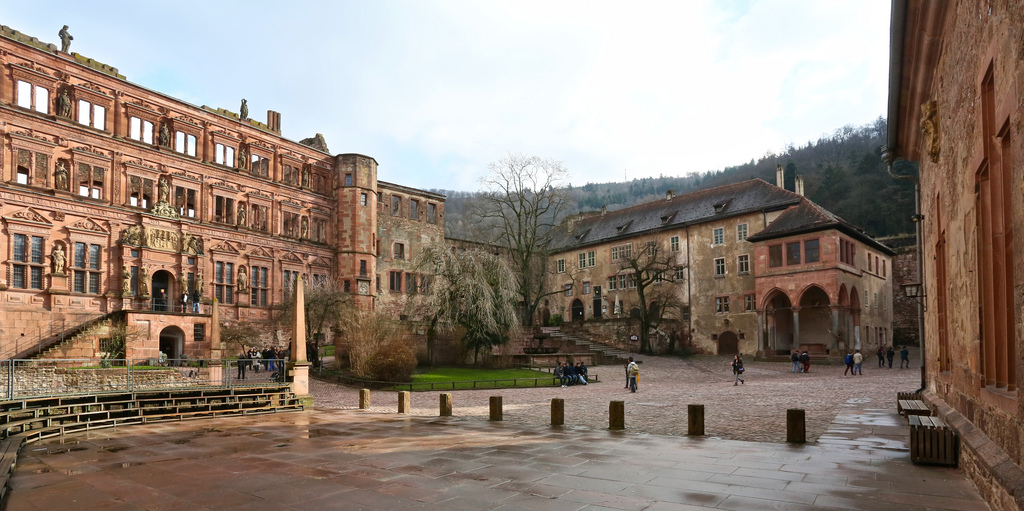
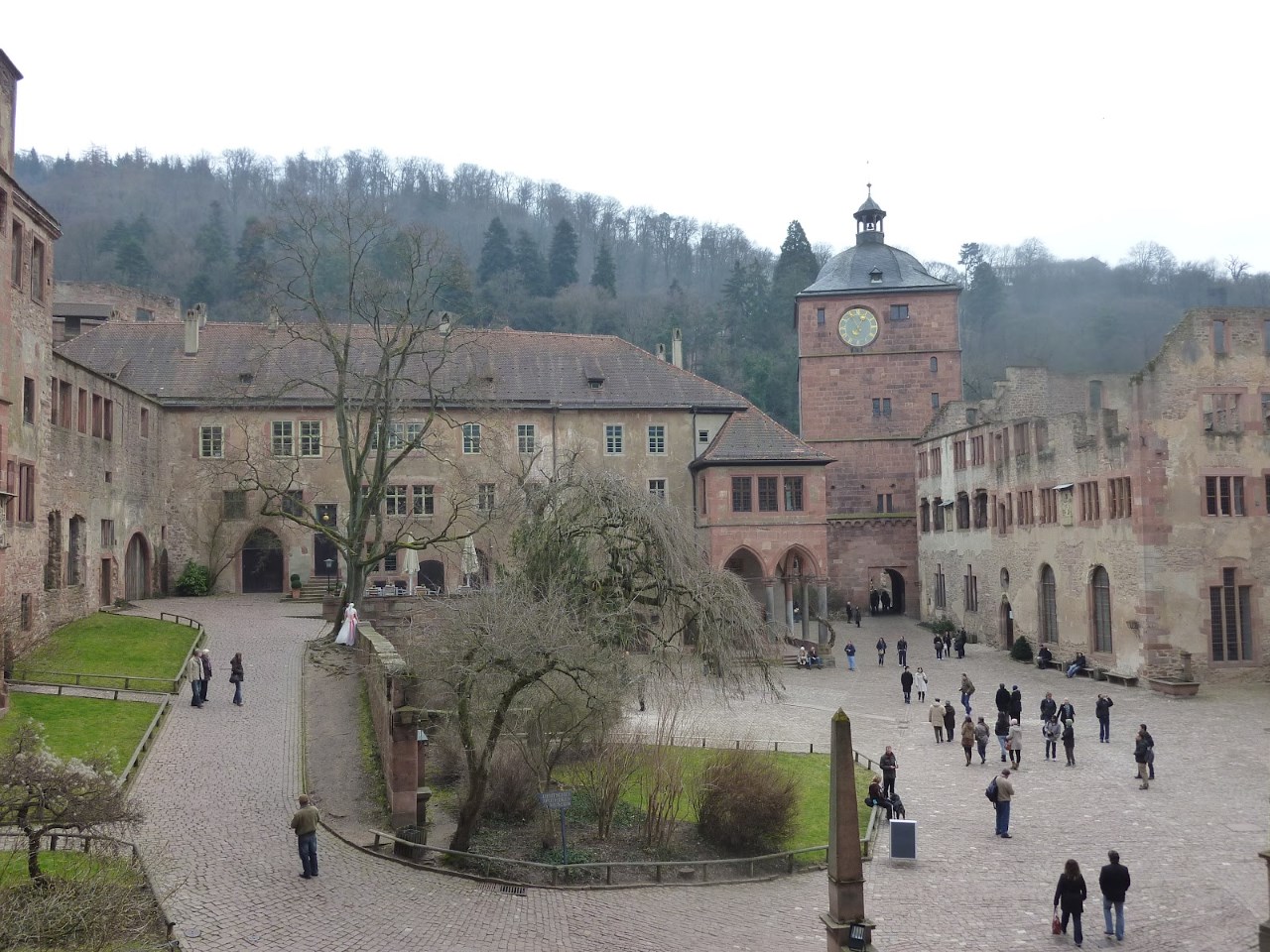
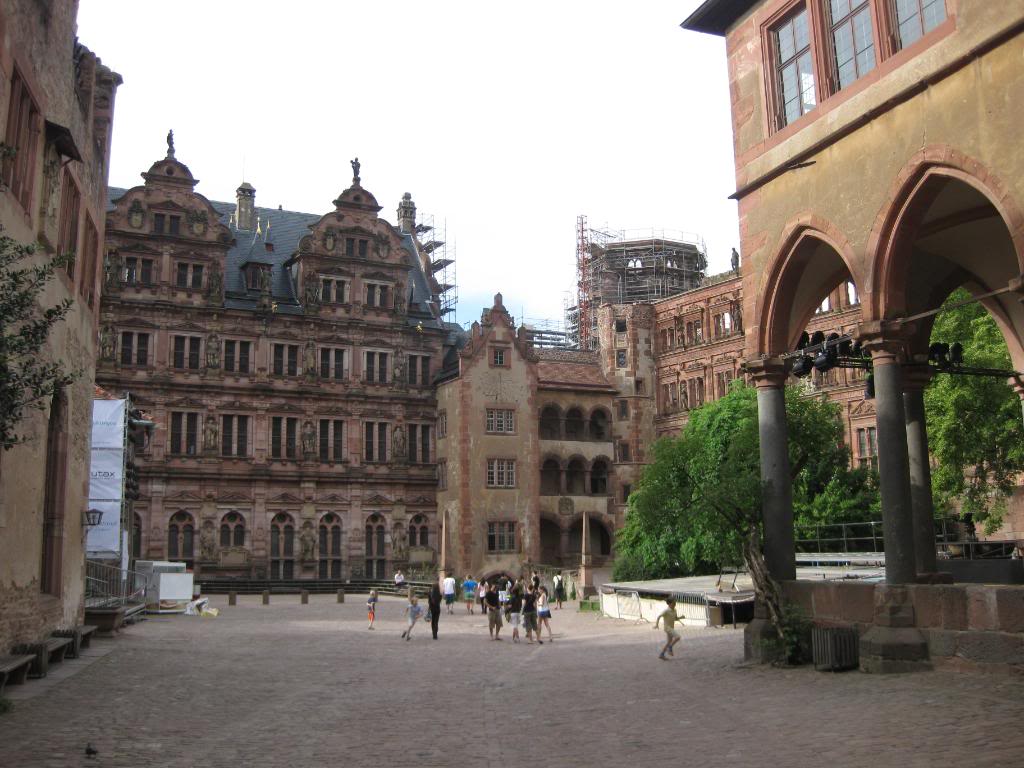

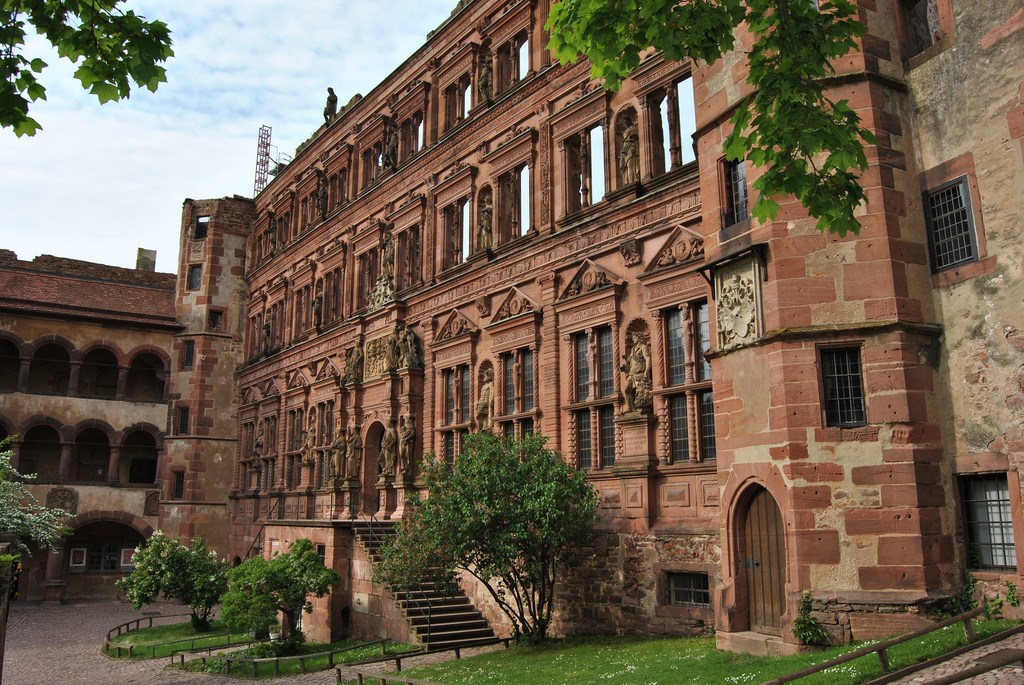
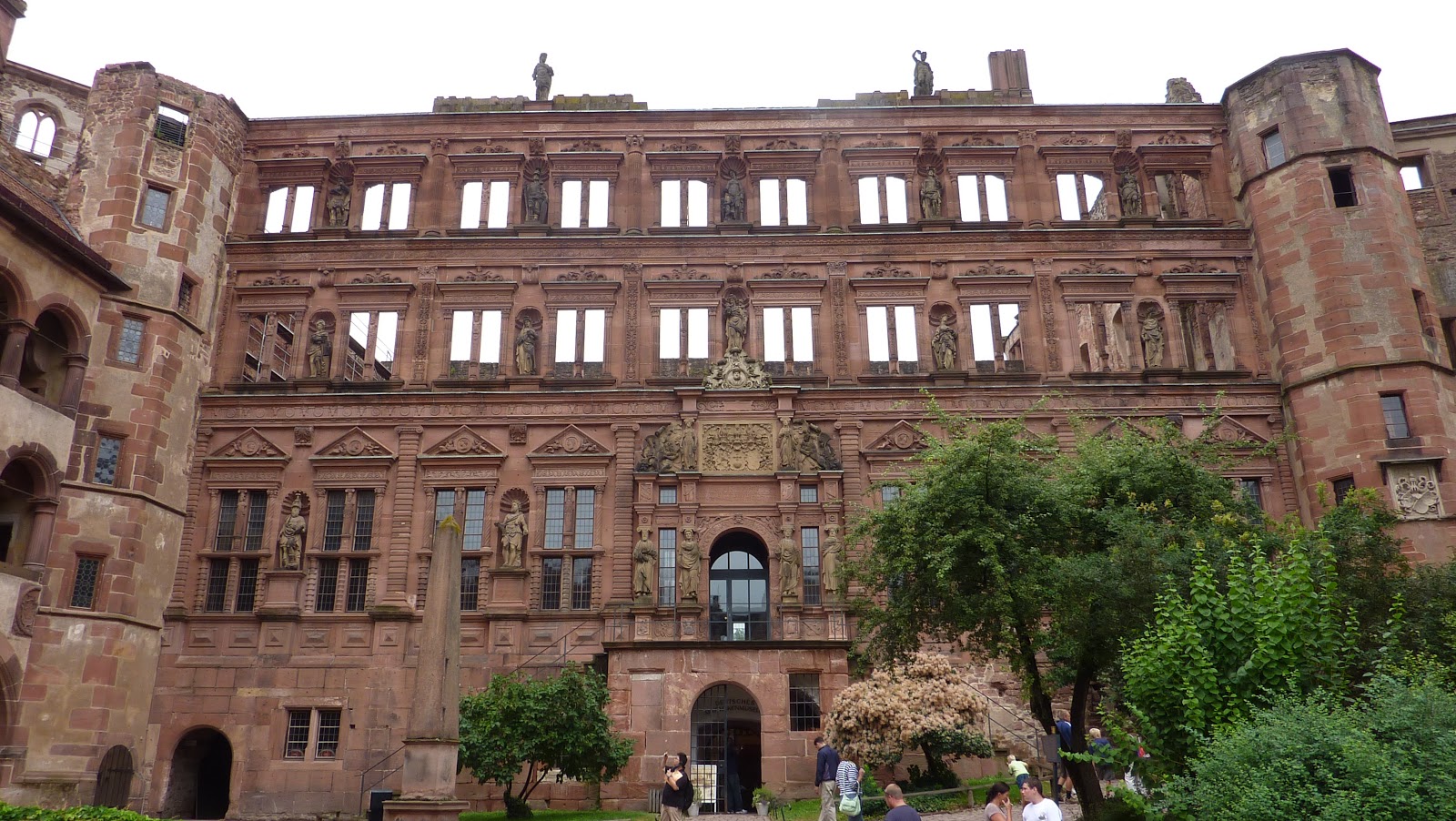

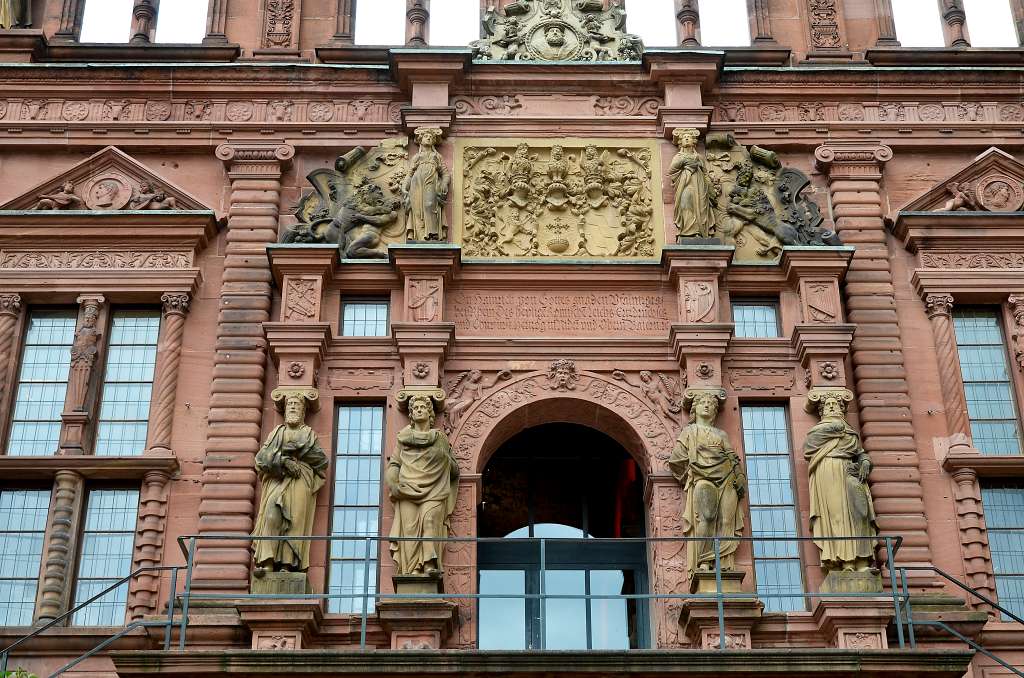
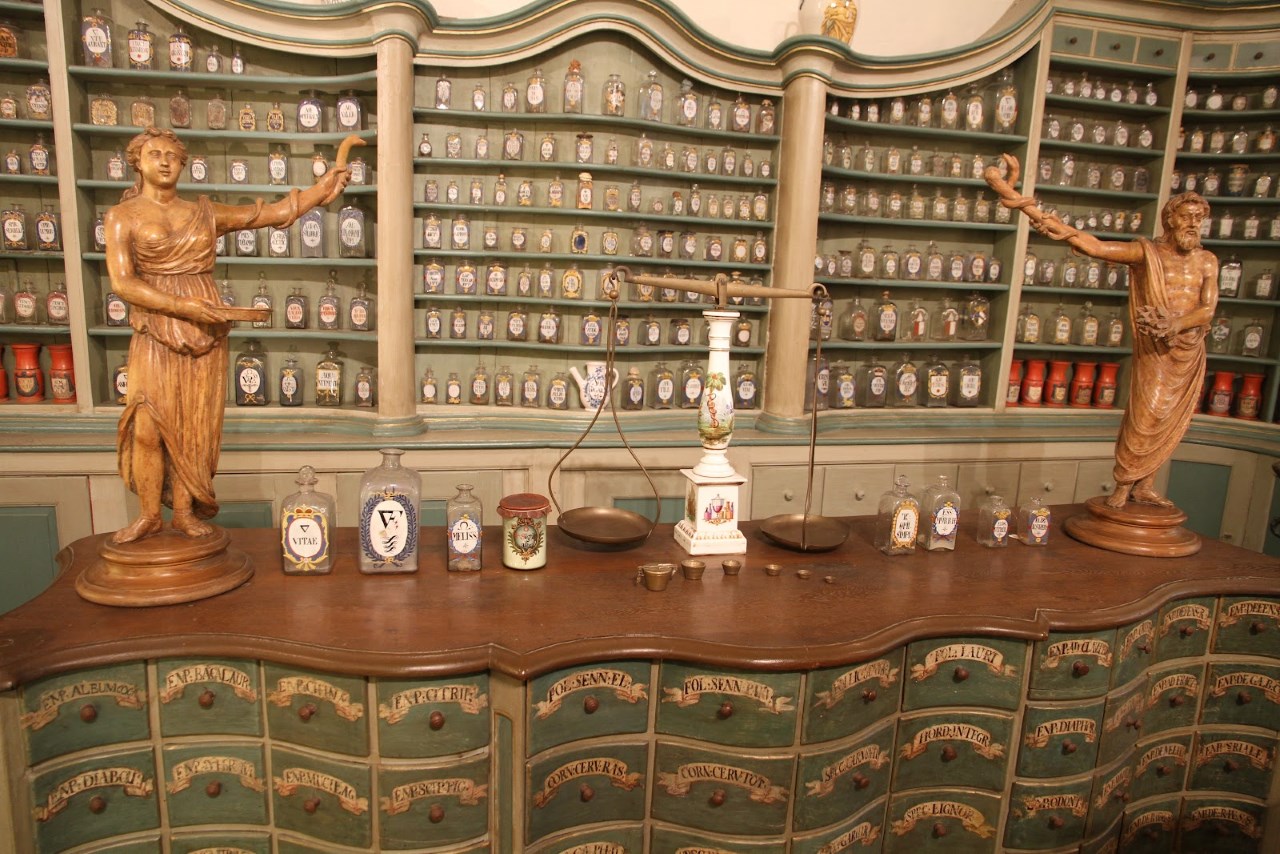
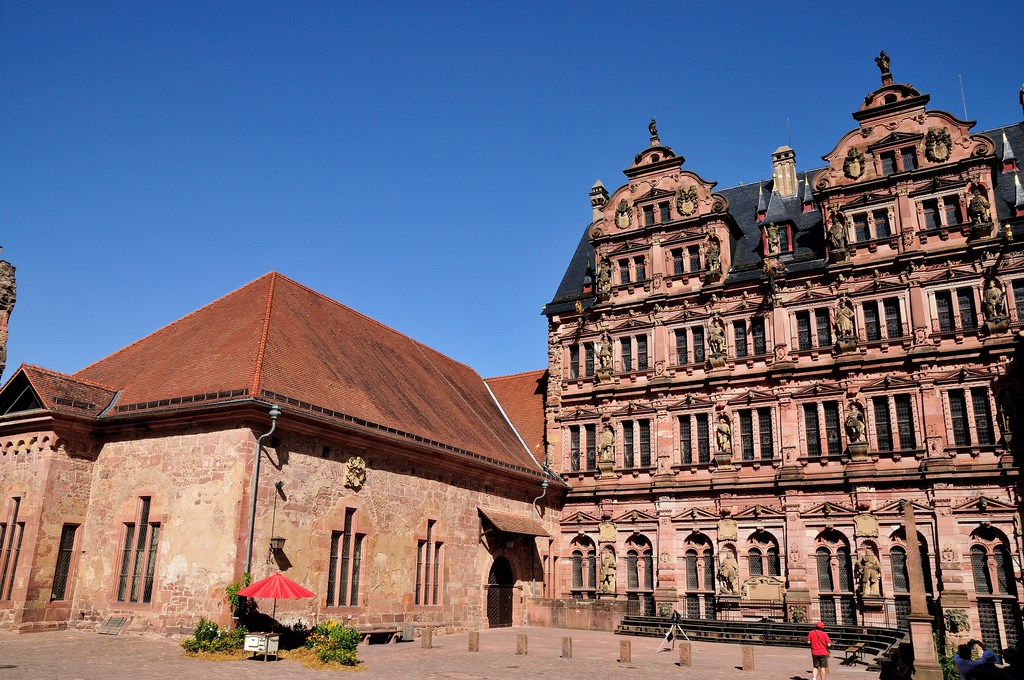
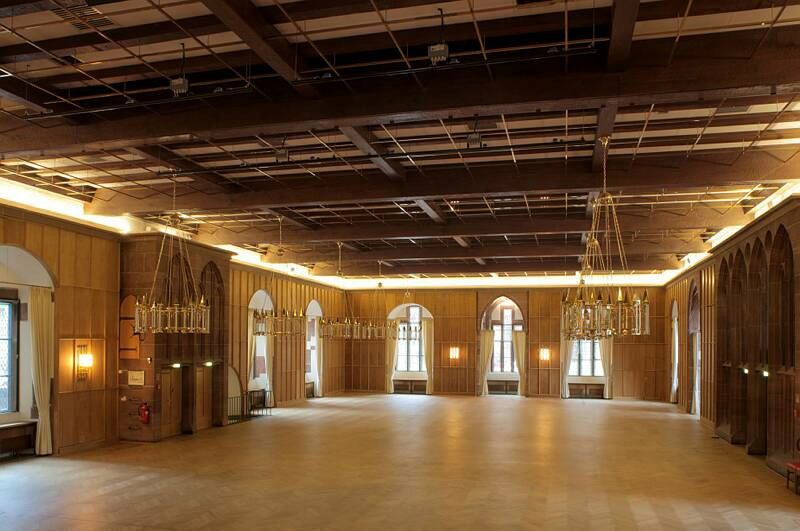
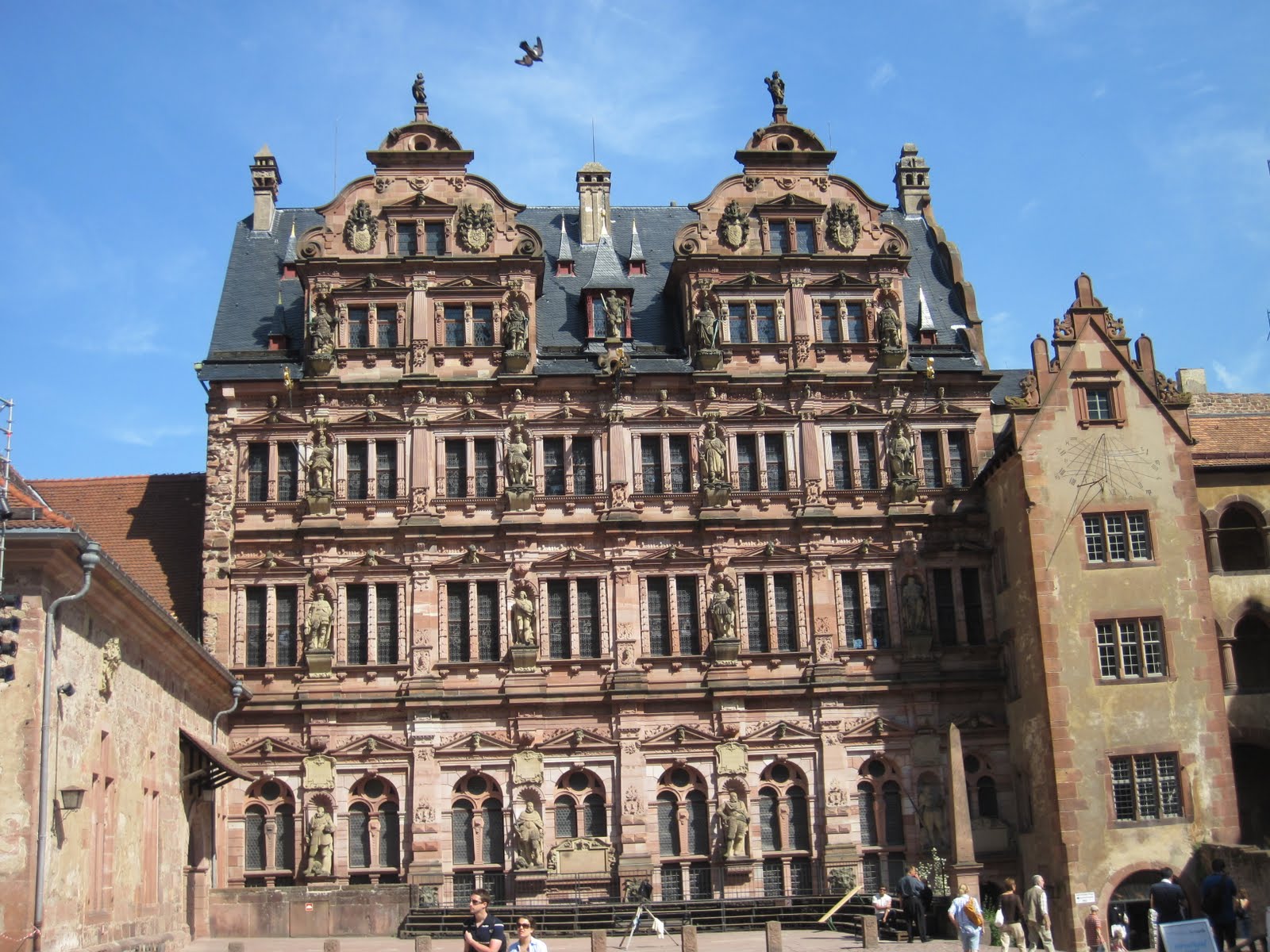
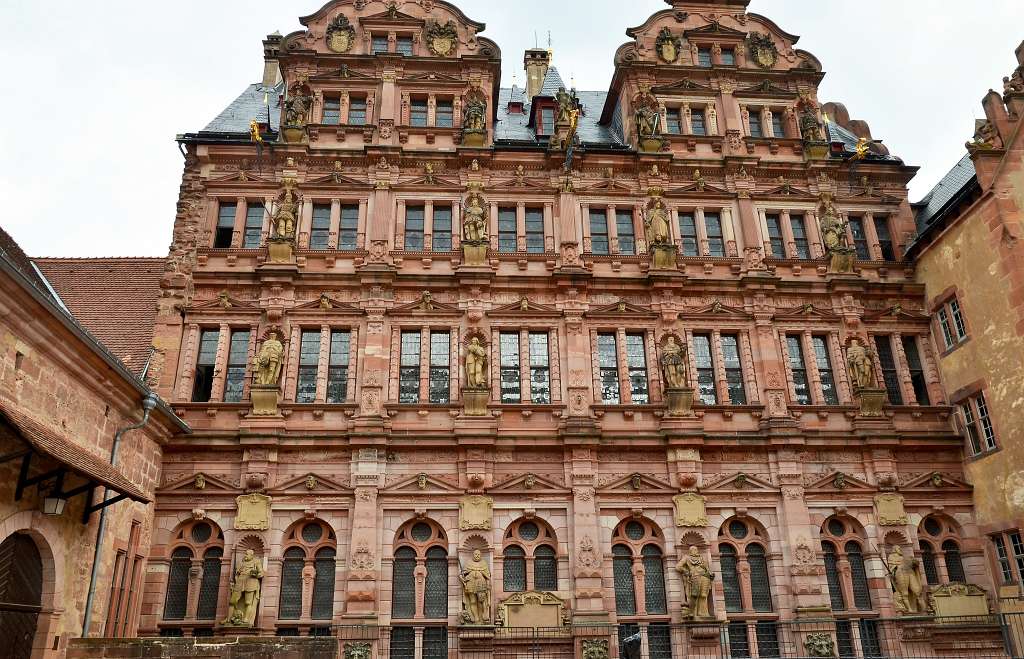

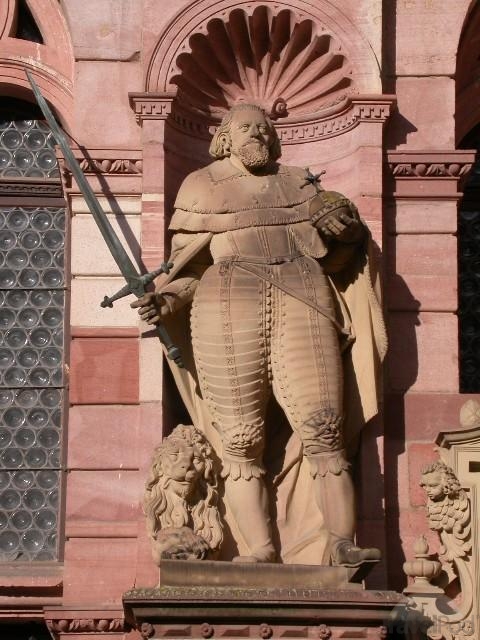
Un castillo imponente y en ruinas (Heidelberg, Alemania)
Escrito por: Meri Castro
Tal vez exageraría si dijera que este castillo tiene tantas historias que contarnos y tantos detalles en su existencia como ladrillos lo componen. O tal vez no. Desde el vamos el hecho de que sea un castillo imponente y en ruinas ya nos plantea un dato tentador -o al menos así puede resultarle a un alma curiosa-.
Primero situémonos espacialmente, nos encontramos en Heidelberg, una ciudad bañada por el río Neckar, en el costado noroeste de Baden Wurtemberg. Por supuesto, es el castillo la estrella preferida por los viajeros pero también hay que señalar que aquí mismo también se sitúa la universidad más antigua del país y que la ruta del vino pasa muy cerca y es otra gran excusa para viajar hasta allí. Viven 140 000 personas aquí y todas tienen algo para decir de ese castillo que domina el terreno desde hace ya muchos siglos.
El castillo está a 80 metros, cuesta arriba, de la ladera del Königstuhl, siendo como el vigilante omnipresente del casco antiguo. Para poder llegar hasta él y entregarse a recorrer sus metros cuadrados y hurgar en su pasado hay que subirse al funicular y descender en la estación intermedia Heidelberger Bergbahn.
Ahora sí, estás listo para andar y desandar un conjunto edilicio cuya estructura más antigua es del año 1214. Tiempo después se agrandó y terminaron por ser dos castillos para 1294. Uno podría creer que cuando algo fue hecho para perdurar por cientos de años las probabilidades de que ocurra algún infortunio se multiplican y así fue que, en 1537, un rayo destruyó el castillo superior.
Sin embargo este desafortunado percance no impidió que se volviera a ampliar el Castillo en 1650. La historia interfirió esta vez y en la medida que los tiempos de paz fueron arrasados por las guerras, los daños e incendios se encargaron de menguar la vitalidad del imponente edificio. En 1764, otro rayo causó más destrozos. De esta sucesión de hechos, en Heidelberg quedaron más ruinas que castillo.
El paso del tiempo y todos los inconvenientes lógicos del devenir histórico conspiraron para que cuando naciera el siglo XIX, el castillo de Heidelberg no fuera más que un gigantesco edificio en decadencia, al que los lugareños usaban como taller donde construían sus casas. Su belleza y rico pasado nunca se dejaron de ver si se lo miraba en detenimiento.
Con todo, estamos hablando de la ruina más famosa de Alemania y no hay muchos viajeros que se resistan a su encanto. Vienen en masa a conocer la Dicker Turm («torre gorda») y el jardín, y desde allí miran sobre el valle y la ciudad, tan extasiados con el entorno como con la maravilla de saberse en un lugar donde la historia se vuelve menos efímero al punto que casi penetra por todos nuestros sentidos.
Dentro del Castillo de Heidelberg funciona el Museo Alemán de Farmacia y, si logras hacer coincidir tu viaje con las fechas propicias, puedes toparte con espectáculos populares, como los Schlossfestspiele (festivales teatrales en el castillo) y bailes como el Ball der Vampire («baile de los vampiros»).
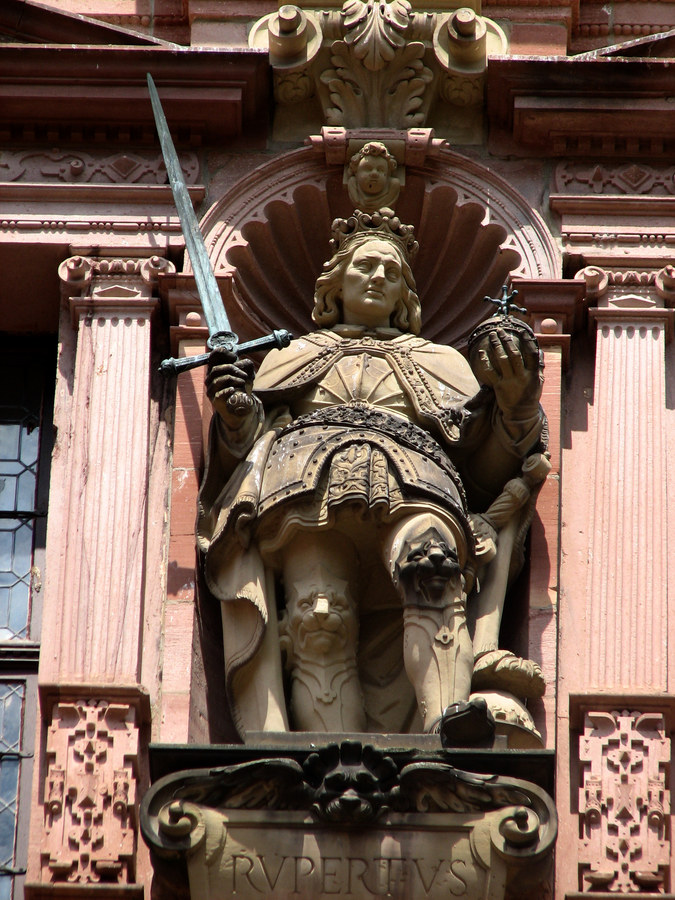
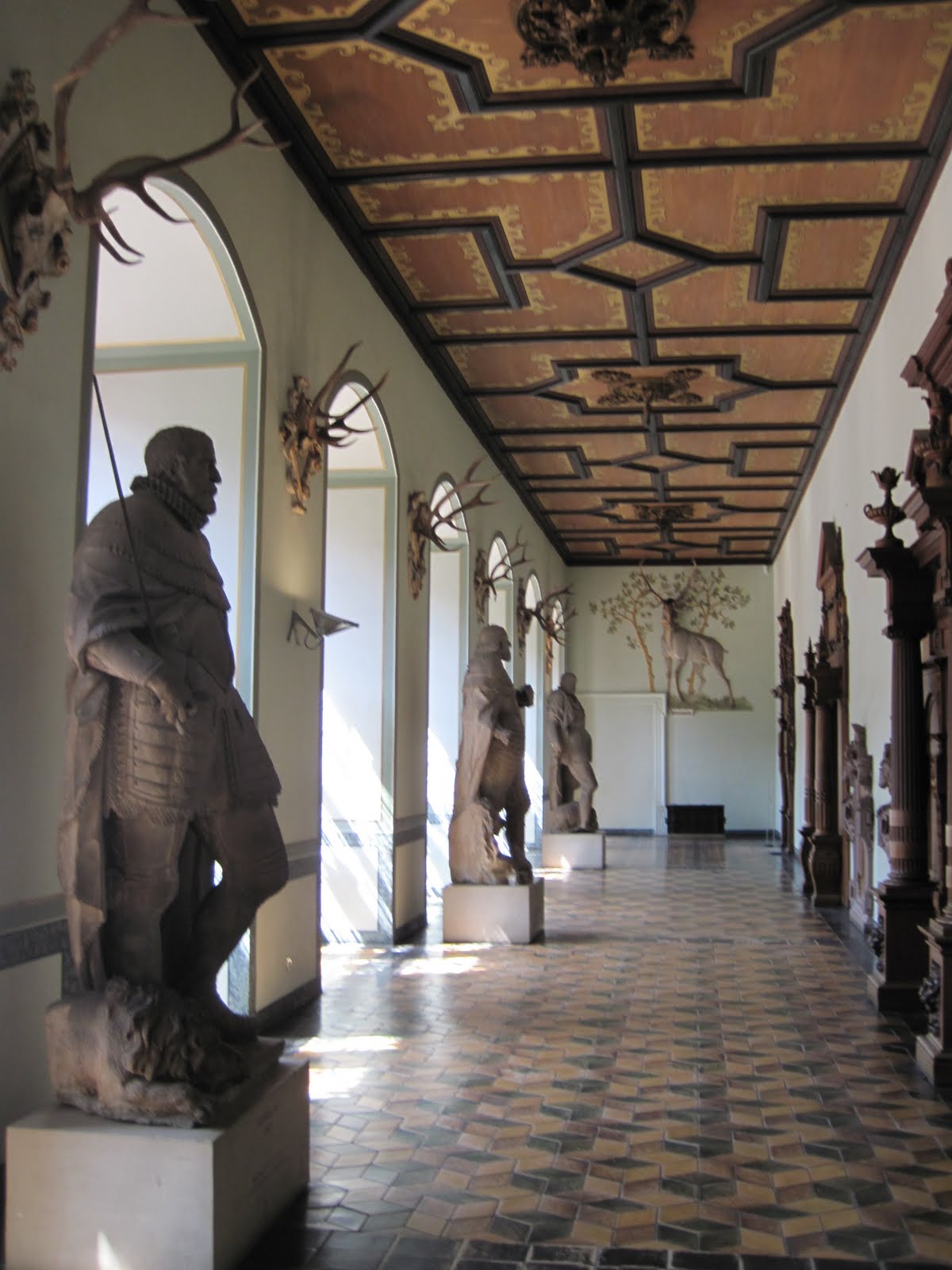
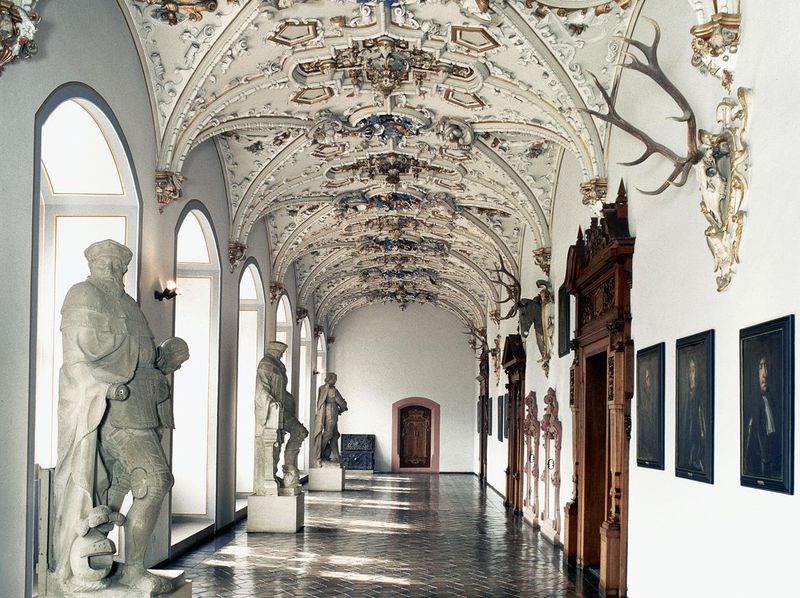
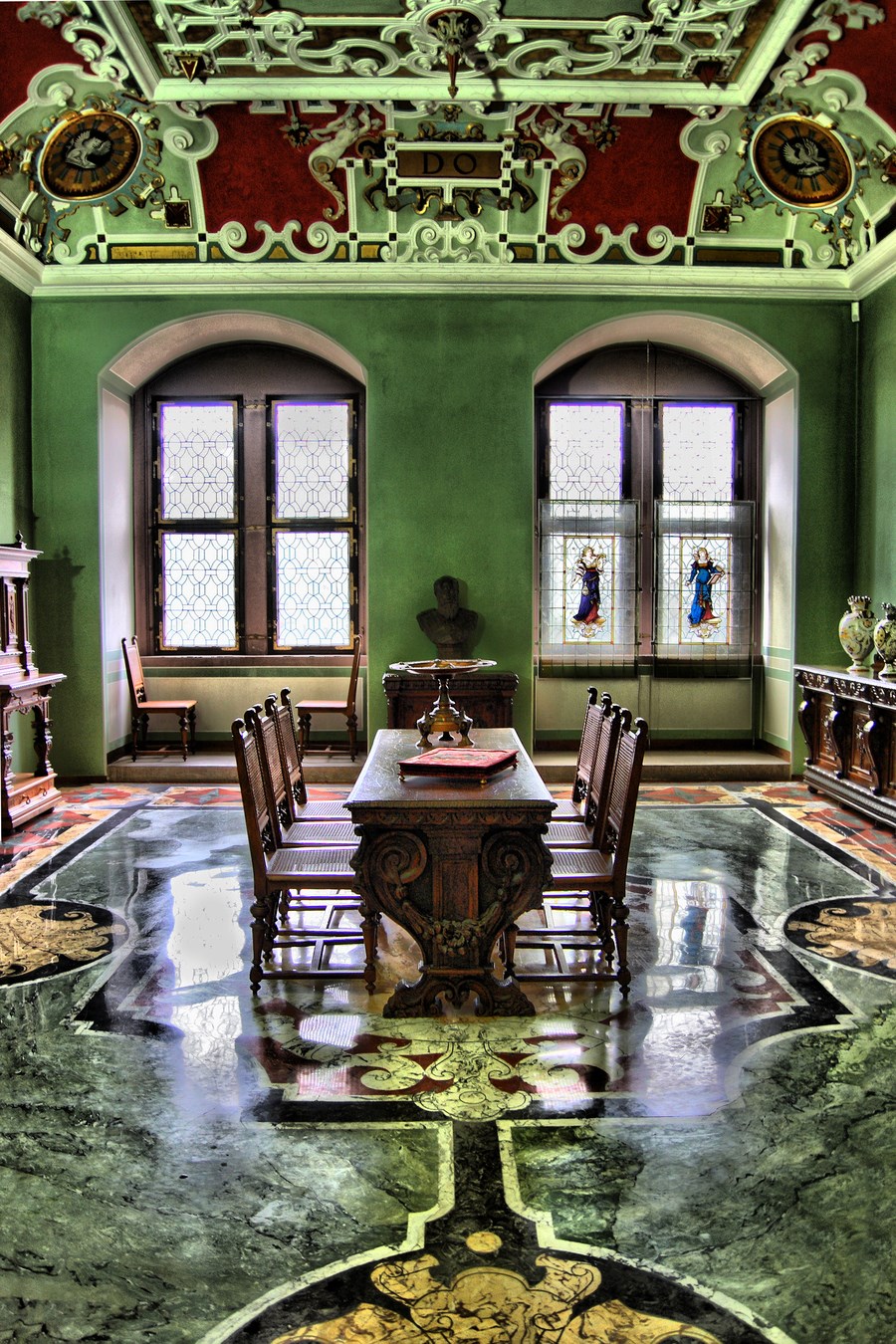
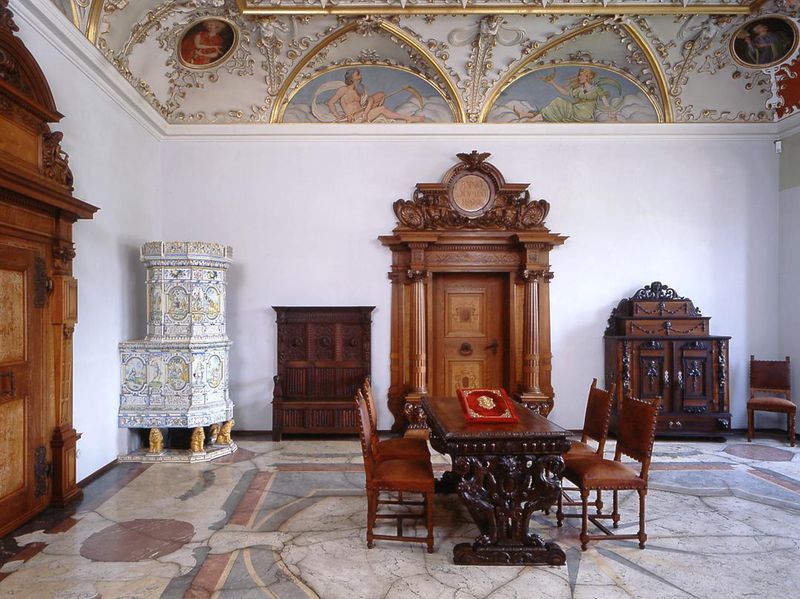
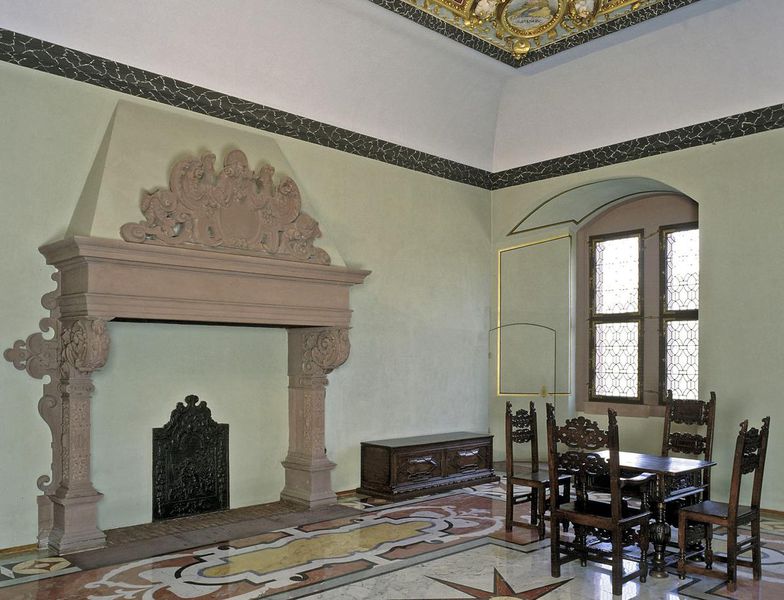
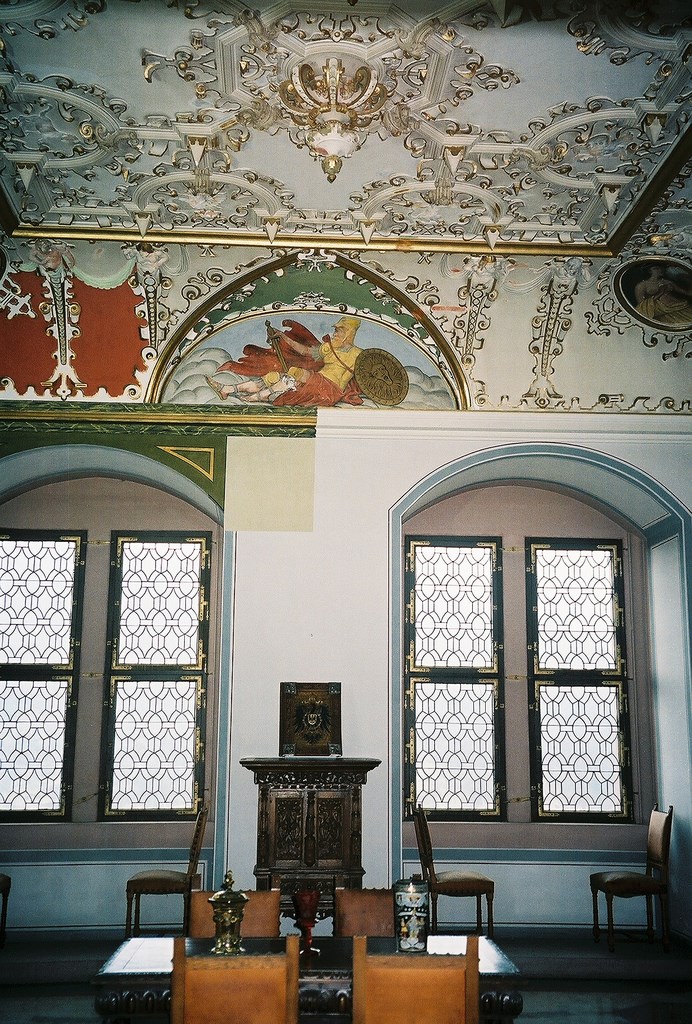

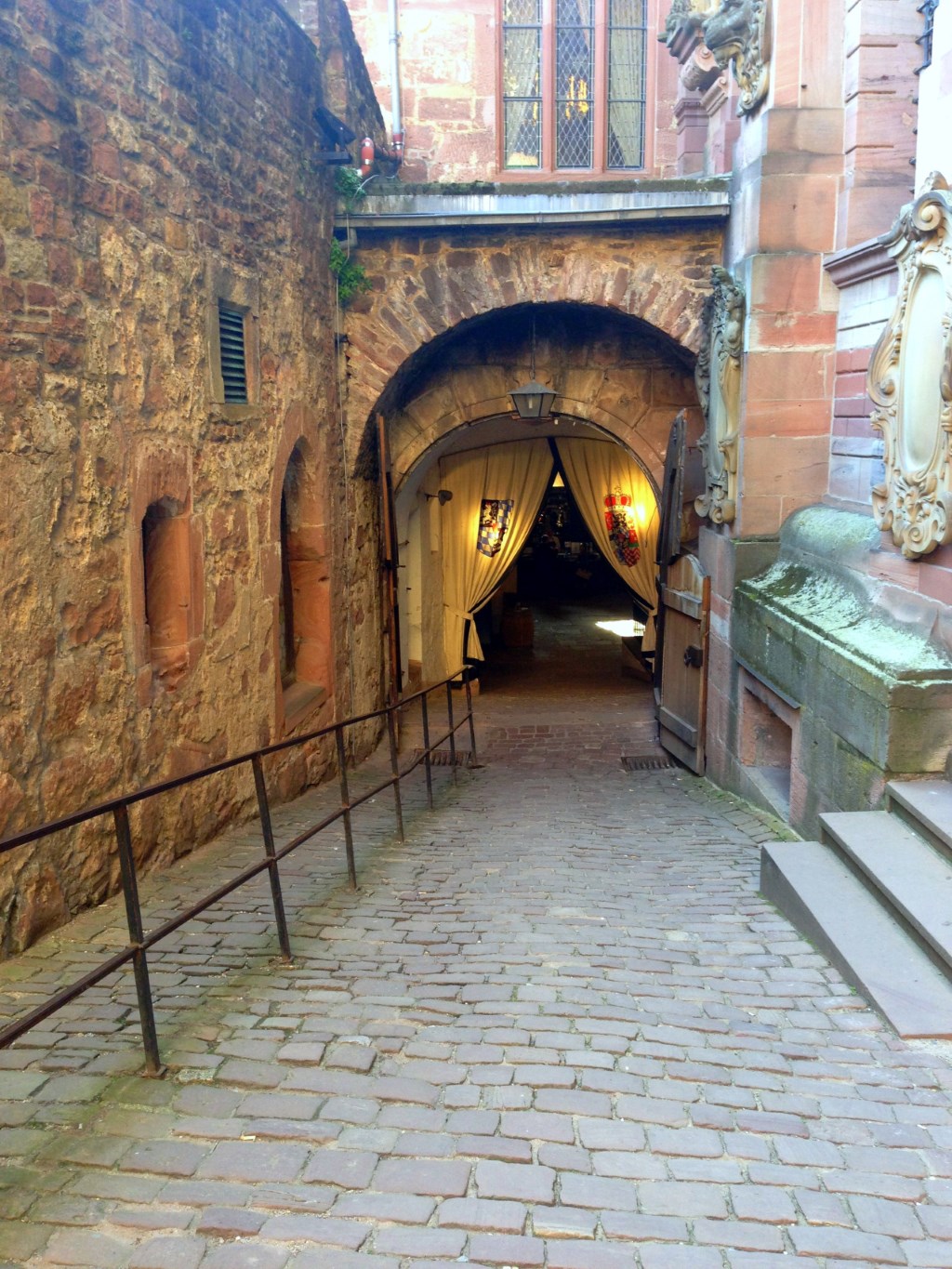

Viajar al castillo de Heidelberg
Si viajas a Heidelberg, esta preciosa ciudad en medio de Frankfurt y Stuttgart, encontraras en lo alto de la ciudad su famoso castillo, construido en una fortificación medieval y acentuado sobre la ladera del Königstuhl. Fue provisto de ampliaciones y llego a convertirse en el siglo XVI en una de las residencias renacentistas más bellas de Alemania. Tras la guerra de los treinta años y la guerra contra Francia, quedo destruido casi por completo, pero en la actualidad las ruinas son un símbolo de la maravillosa época del renacentismo Alemán, donde es visitado por muchísimos turistas, para contemplar la estructura de este majestuoso castillo, su increíble jardín y las espectaculares vistas que ofrece. Anualmente se lleva a cabo dos fiestas muy populares, como los Schlossfestspiele (festivales teatrales en el castillo) y bailes como el Ball der Vampire (baile de los vampiros).
No te pierdas nuestra lista de las atracciones más visitadas, que por supuesto no podrás olvidar en tu viaje. Además si buscas vuelos baratos, hoteles y alquiler de coches, no olvides las compañías low cost, donde conseguirás hacer todas tus reservas y hacer tu viaje barato.
¿Cómo subir al Castillo?
Se puede subir en funicular, con salida desde la estación Kornmarkt. El billete se puede comprar en el punto de información turística en la estación central, en el ayutamiento o en la estación del funicular.
Horarios
Para el Castillo, diariamente de 8.00 a 17.30 horas.
Para Aphoteken Museum
De abril a octubre: de 10.00 a 18.00 horas, de noviembre a marzo: de 10.00 a 17.30 horas.
Ticket y precios
Billete combinado incluye (funicular, patio del castillo, gran barril, Museo farmacéutico)
Adultos 6,00 €
Billete reducido 4,00 €
Visita guiada al interior del castillo
Visita a las salas conservadas o reconstruidas de los Electores Palatinos. En ingles o alemán.
Precio: Adultos 4,00 €, billete reducido 2,00 €
Más información en su web:
http://www.schloss-heidelberg.de
Deutsches Apotheken-Museum (Museo farmacéutico alemán)
Podrás visitar la farmacia con una muestra de recipientes y diferentes medicamentos.
Más información es su web:
http://www.deutsches-apotheken-museum.de
http://www.turismoporalemania.com/2013/03/viajar-al-castillo-de-heidelberg.html
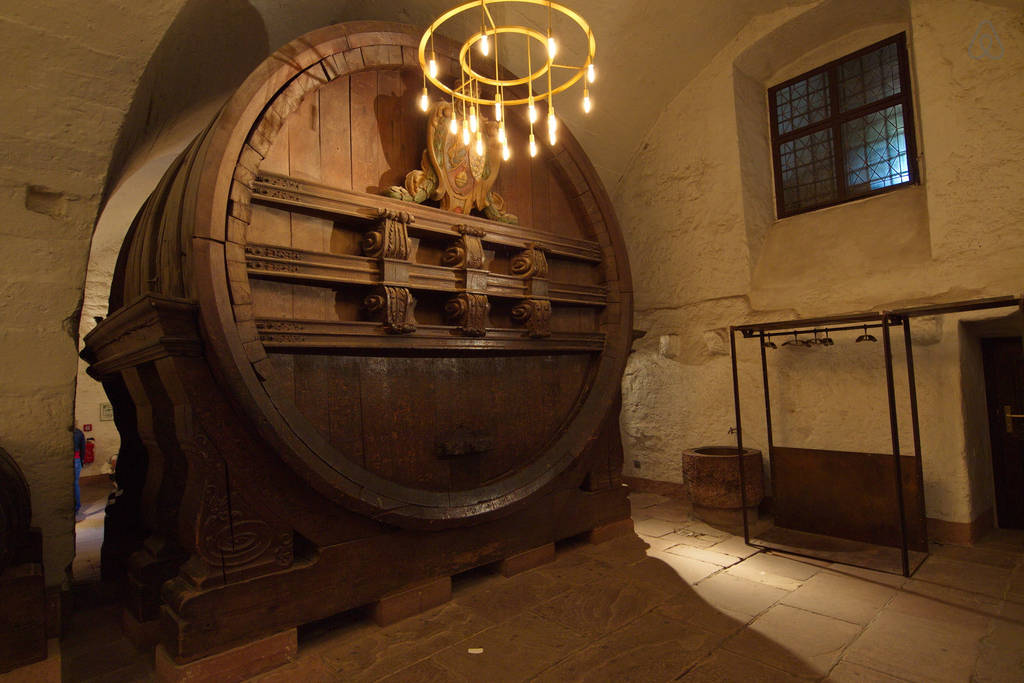
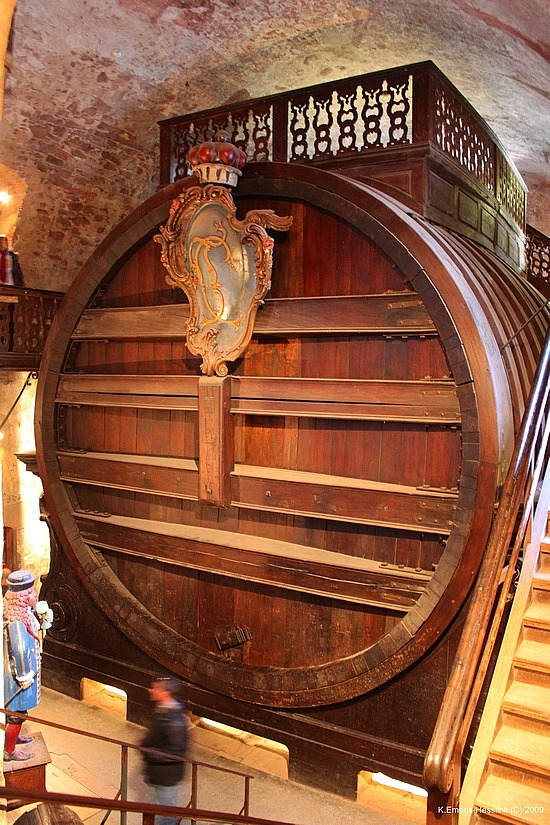
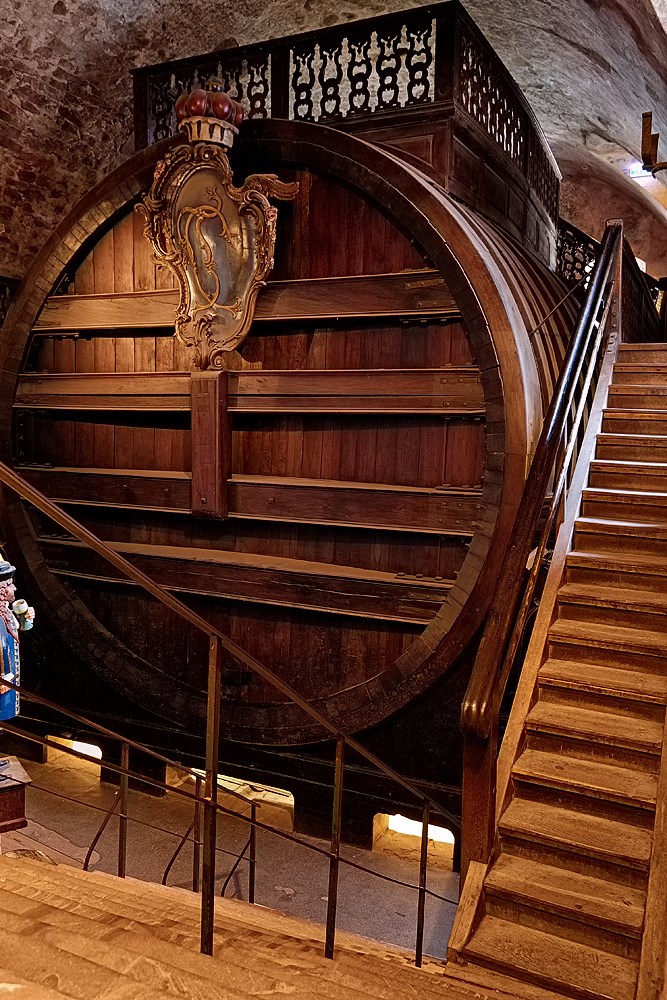
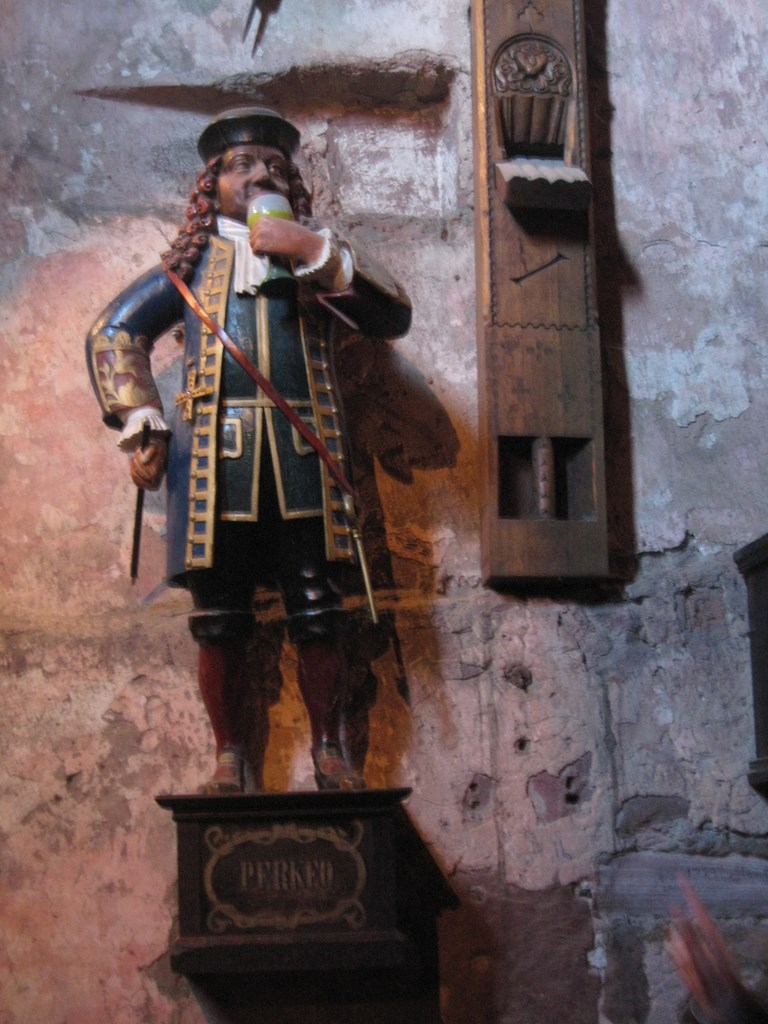
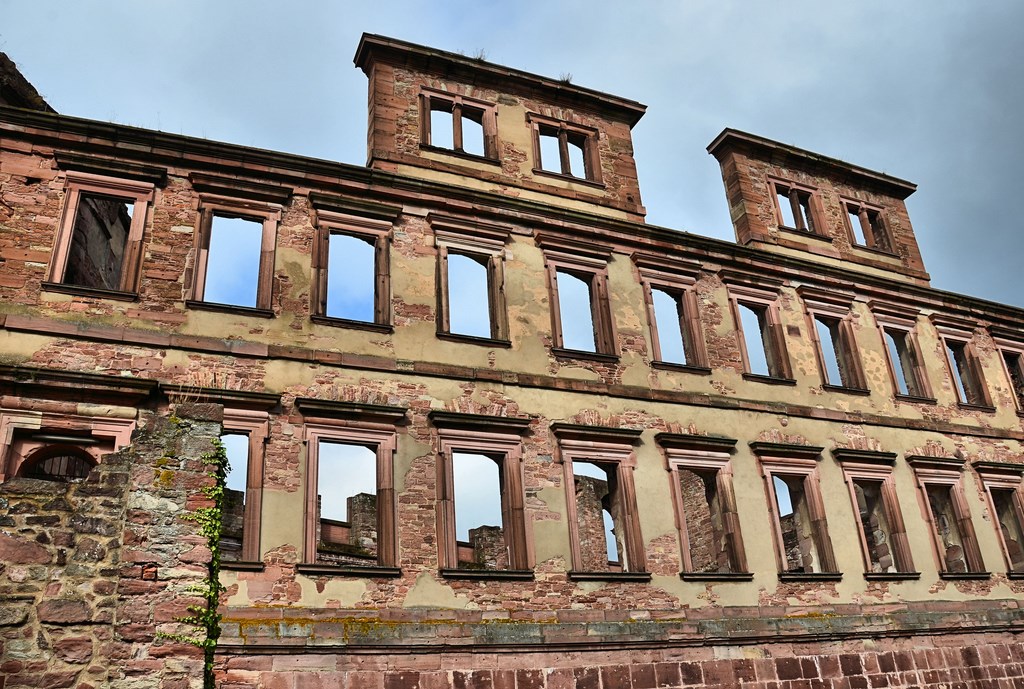
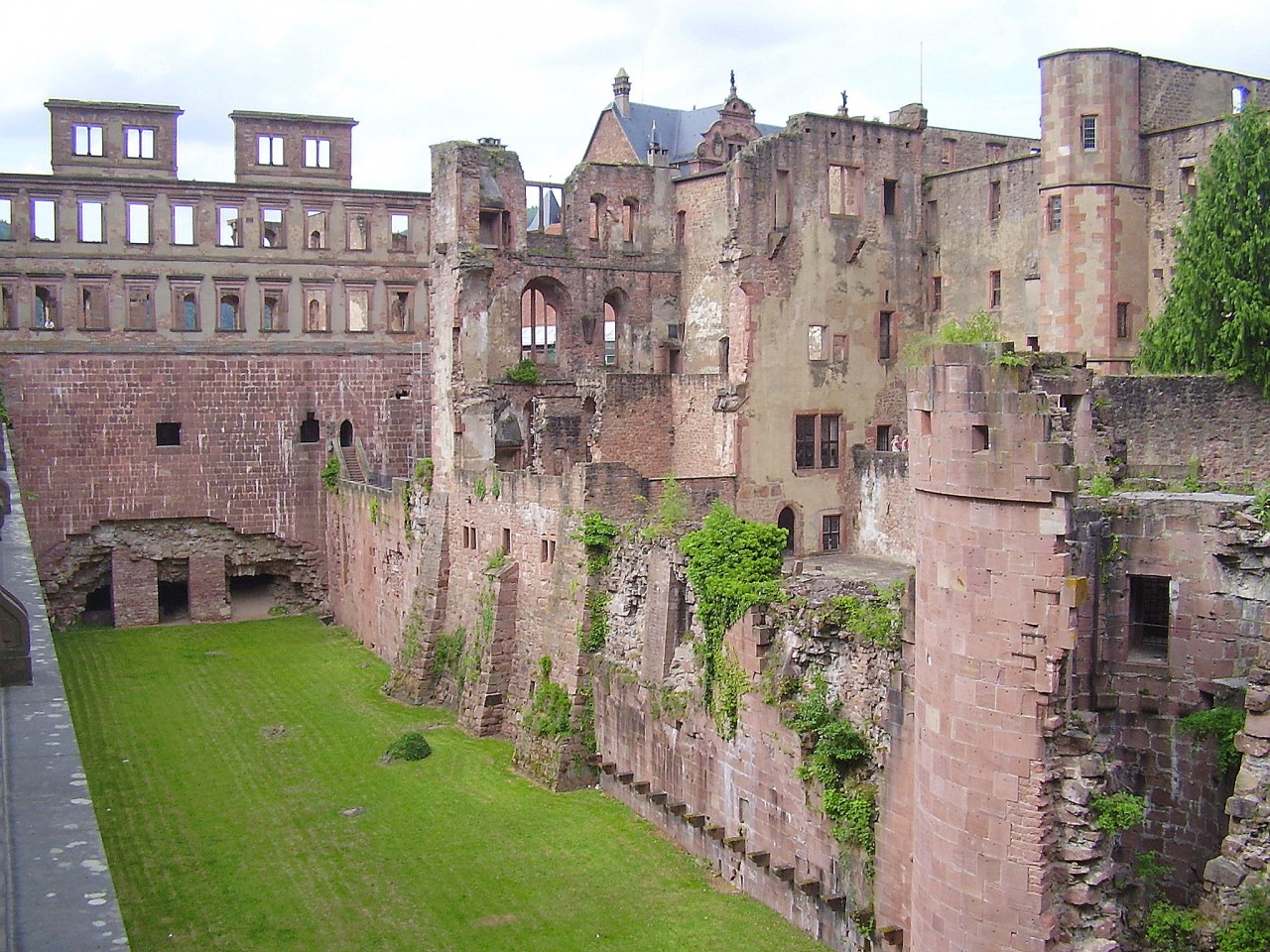
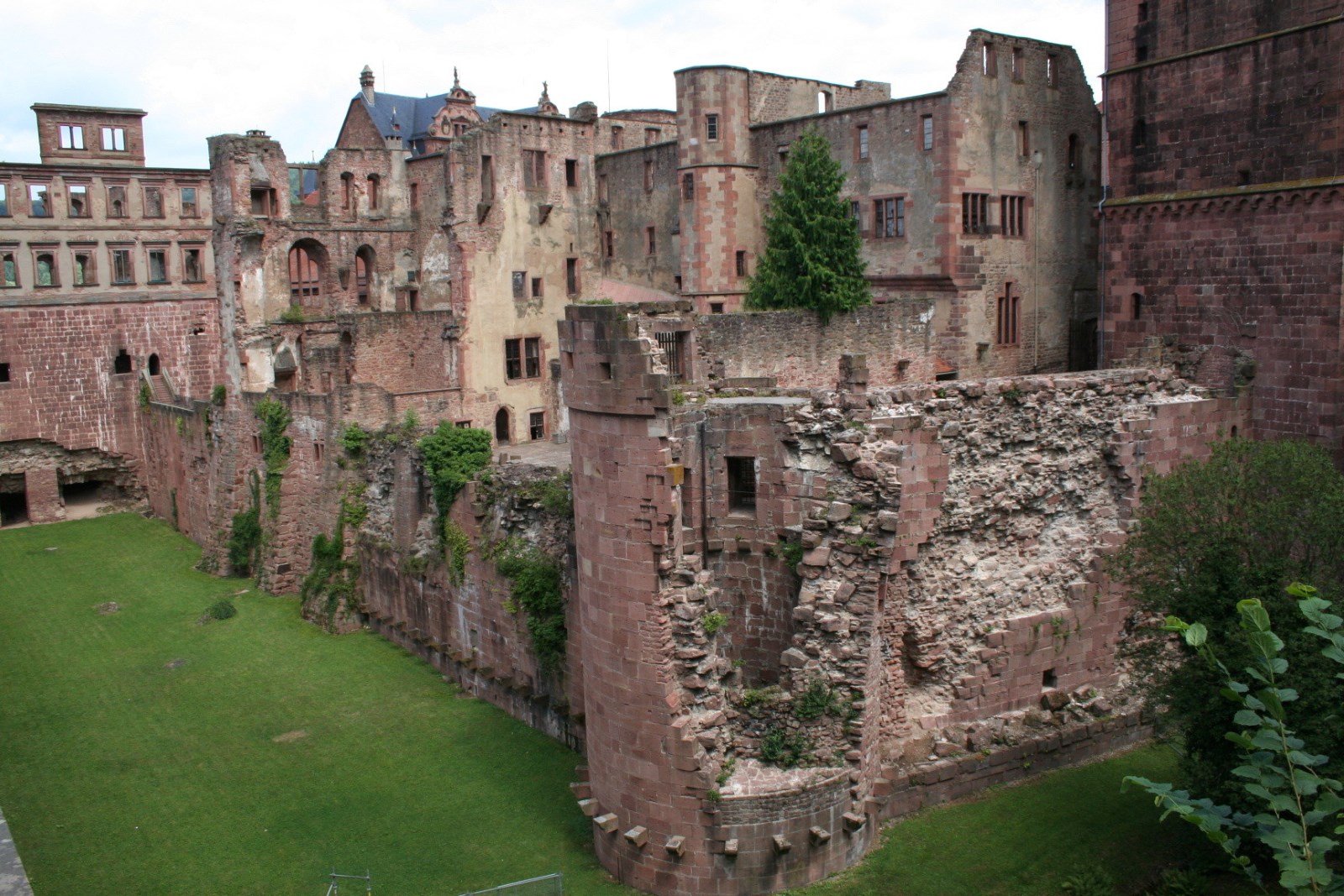
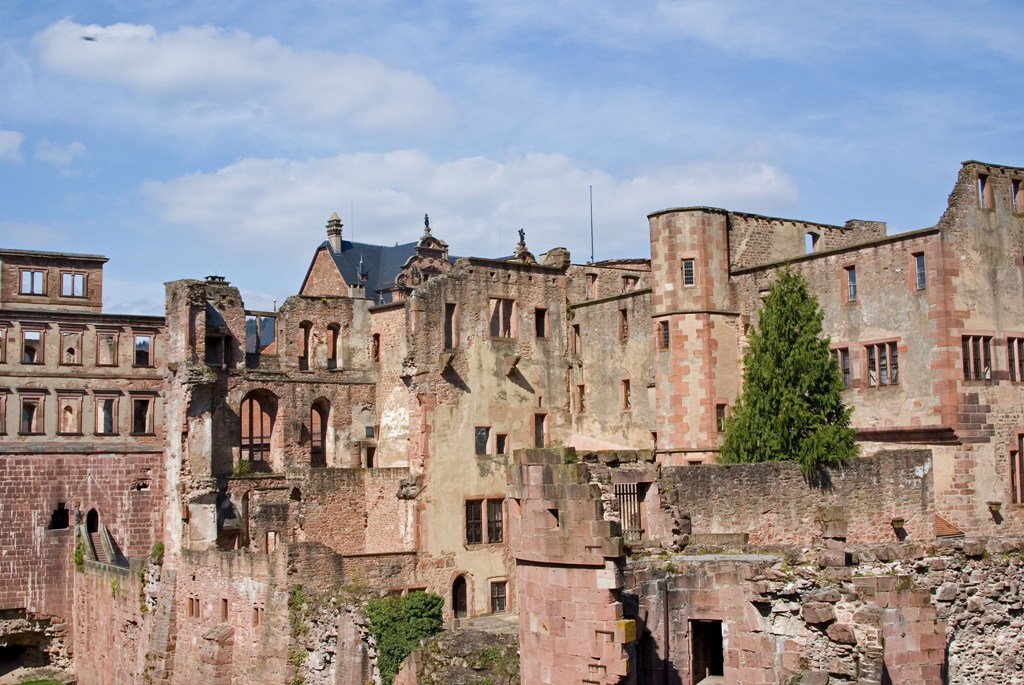

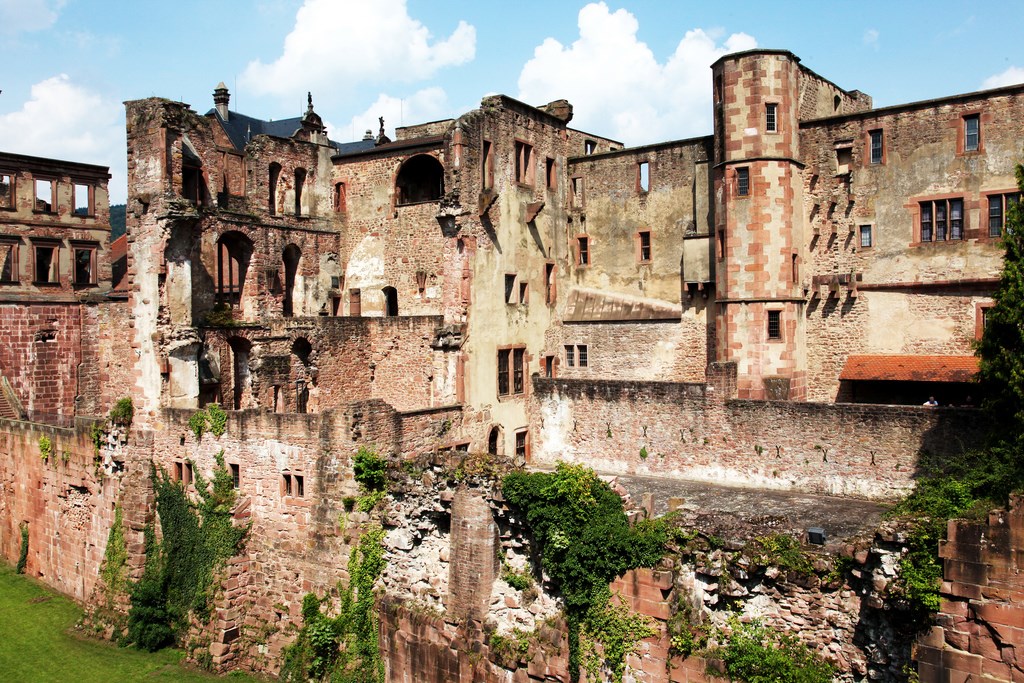
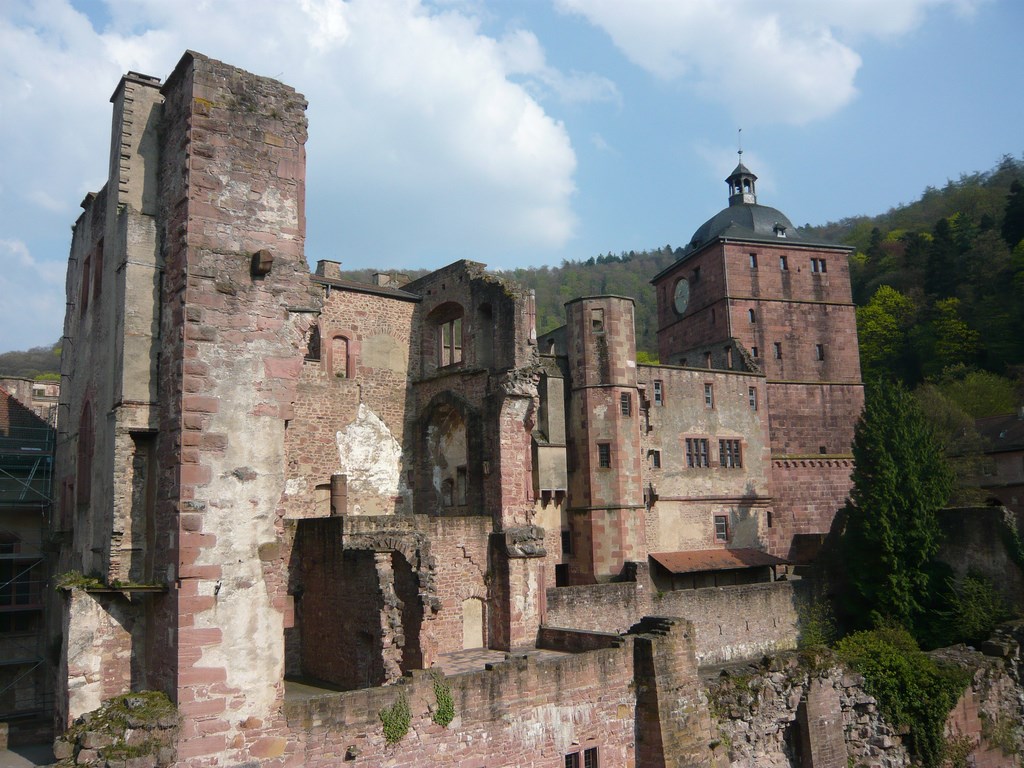
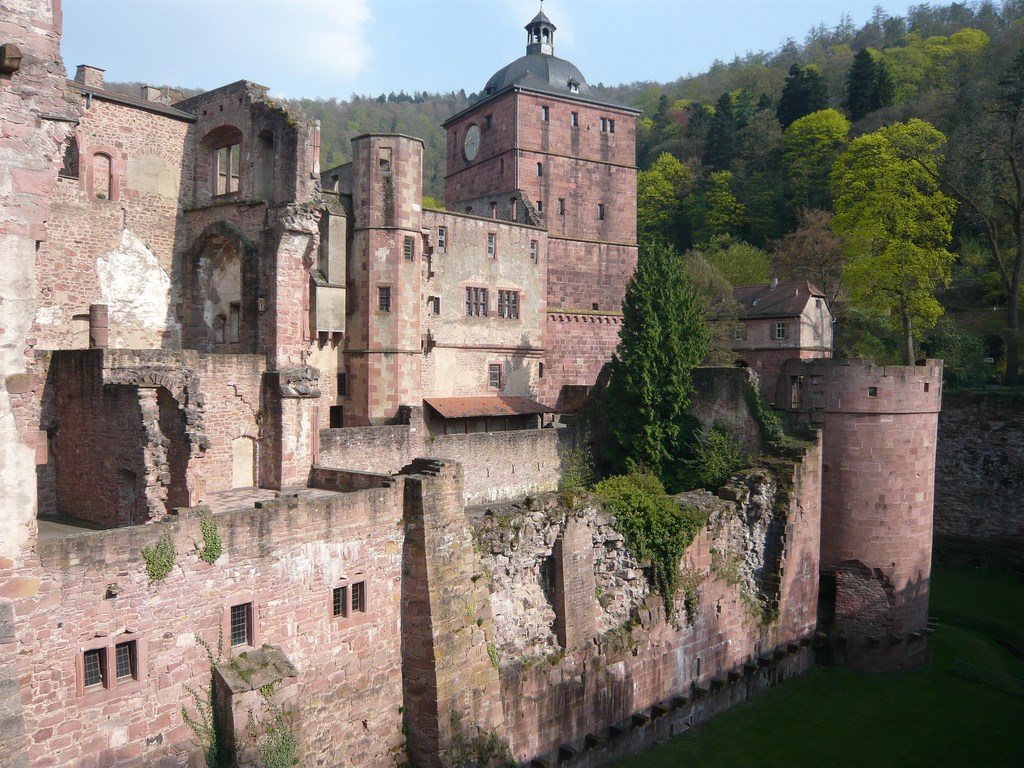
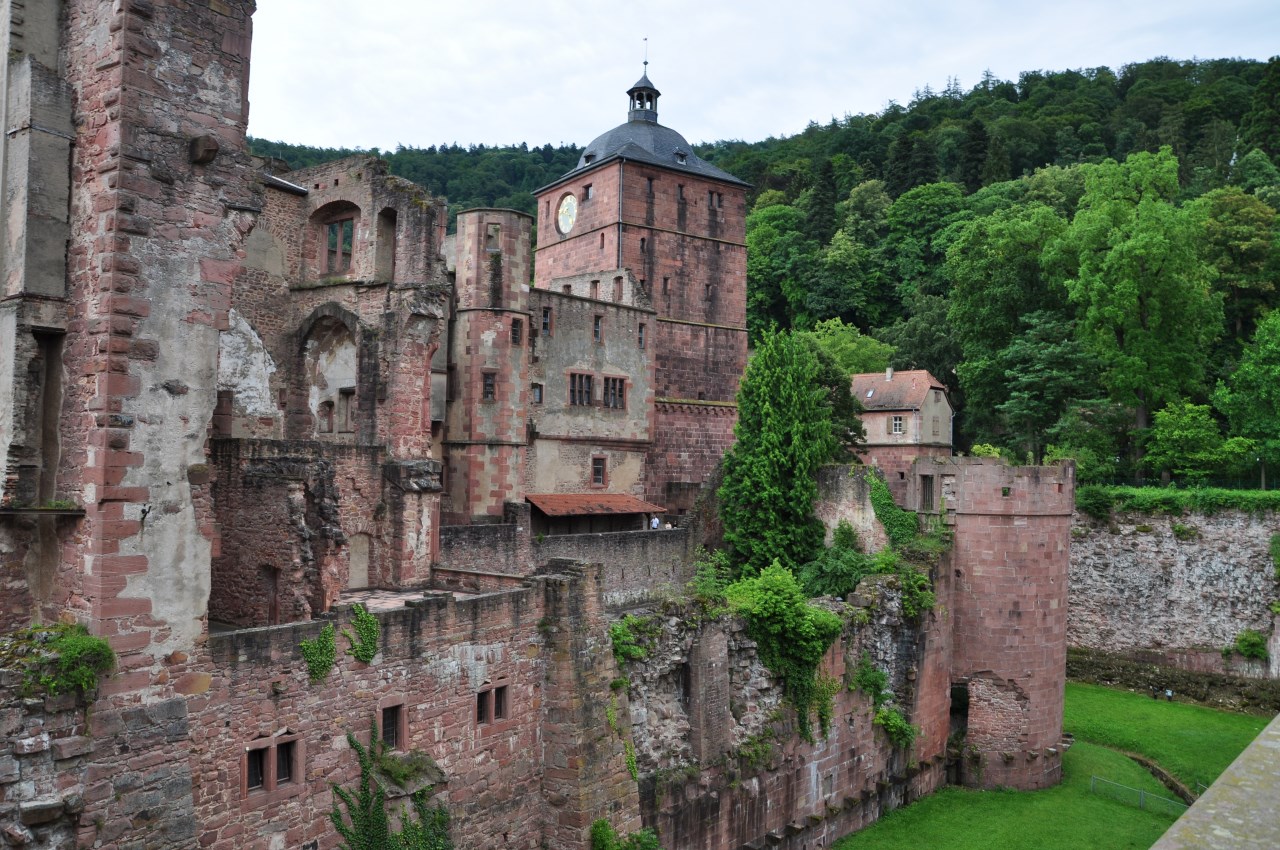
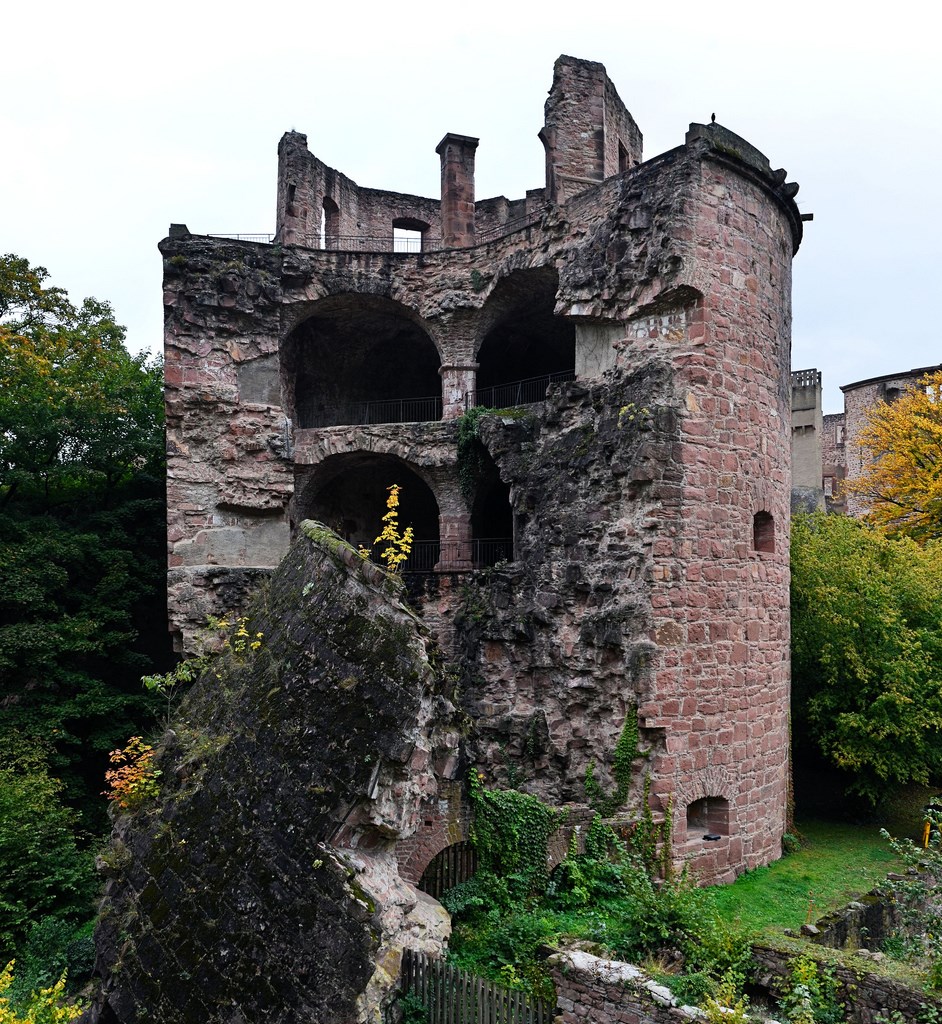
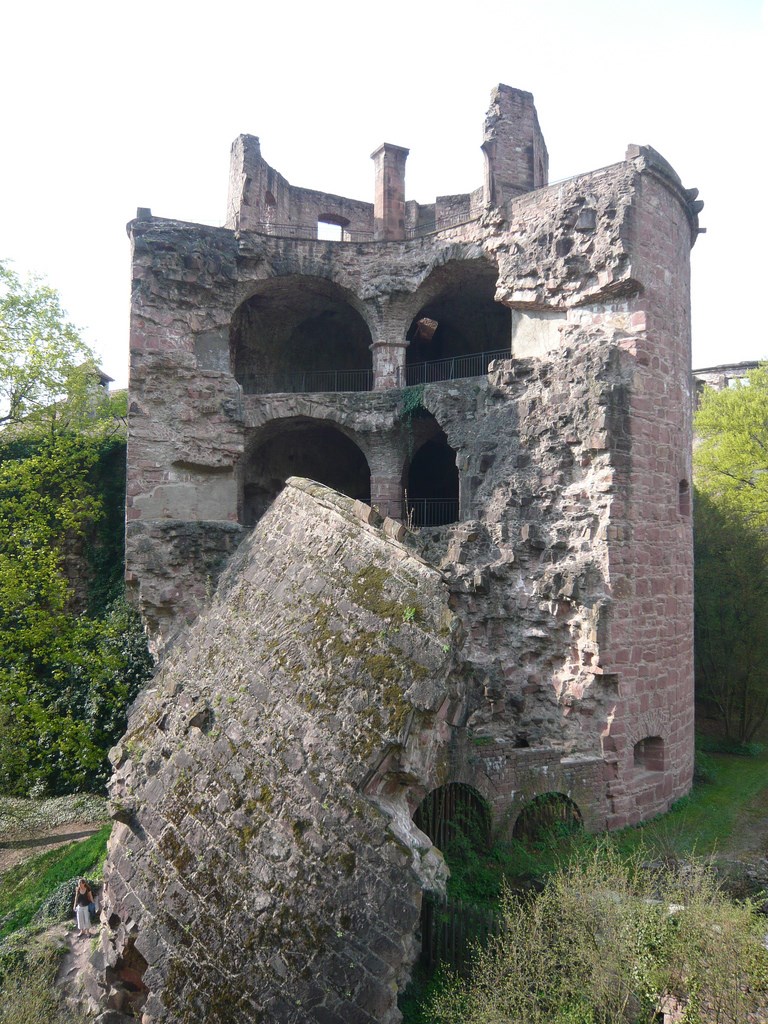
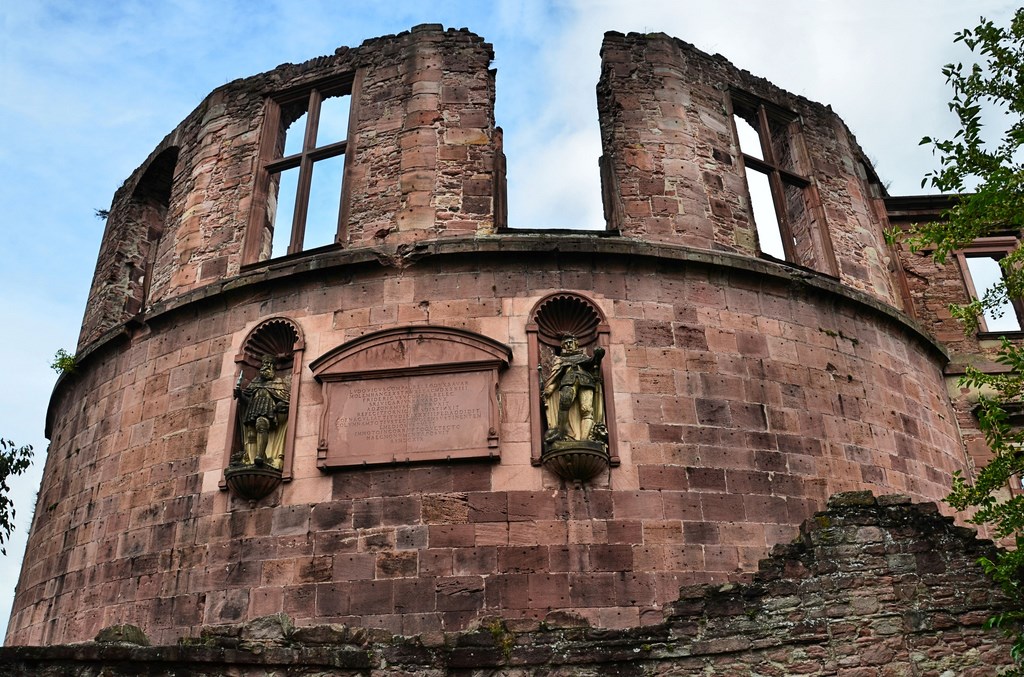

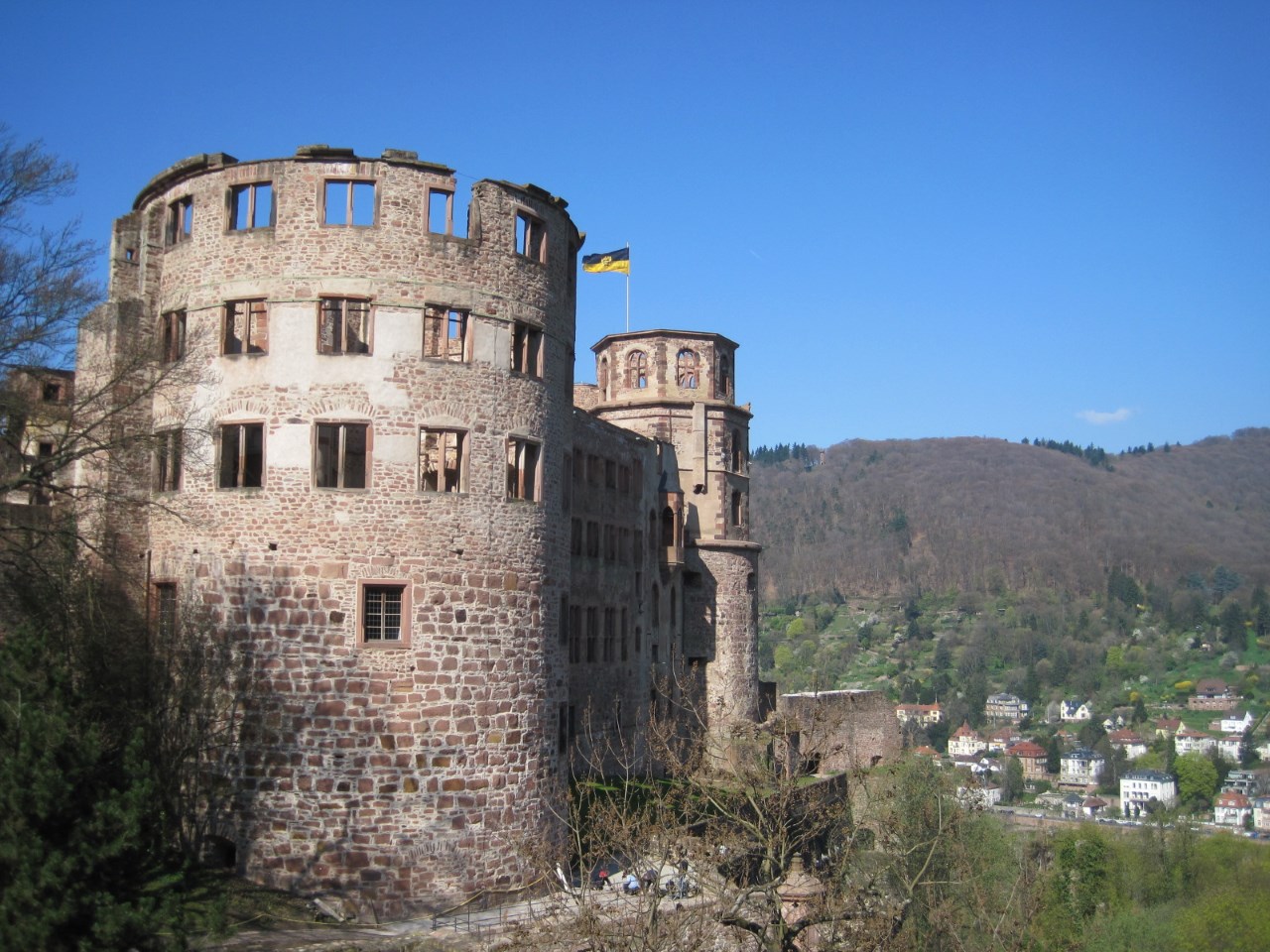
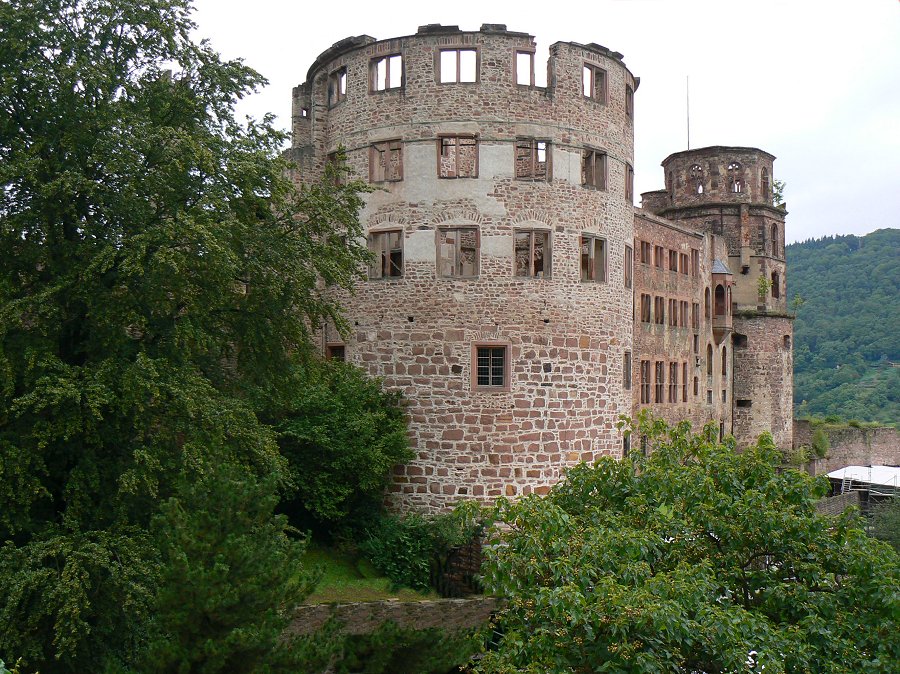
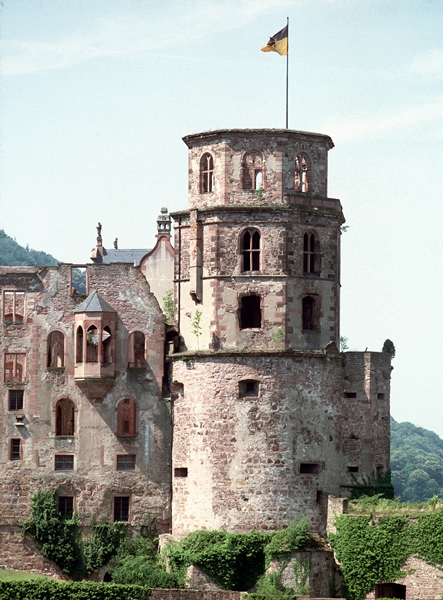
Heidelberg Castle is located in the Neckar Valley about the city of Heidelberg on Koenigstuhl Mountain. It dates back to the beginnings of the city. A document dated 1303 states there were two castles on the mountain, an upper and lower castle. Only archeological remains and a few sketches remain of the upper castle but the lower castle is probably the precursor to what exists today.
The castle is connected to the Electors Palatine Seat and in the 13th century, Duke Ludwig II of Bavaria divided his holdings between his sons. Rudolf I was given land along the Rhine and his son, Rudolf II was named the first Elector Palatine in 1329. It was not until Ruprecht I (1309-1390) that the castle became more than just a defense fortress and it became the residence of the Electors Palatine.
Heidelberg Castle was destroyed three times during its history. It was badly damaged during the Thirty Years War like the rest of Germany. After the war, restoration work was done but it was mostly limited to the interior since money was tight. It was destroyed by the French during the War of Succession. In 1689, it was ordered by the French to burn the castle and town. Shortly after, the French left and work began to stabilize the castle's structure. Four years later in 1693, the French returned and destroyed the castle again. In 1697, the War of Succession was officially over and renovation work on Heidelberg Castle started again. The Elector, Johann Wilhelm was not a fan of the castle because it did not fit the popular Baroque style. He had plans drawn up for a new Baroque residence but he considered renovated the existing castle into the popular style due to money constraints. In 1720, it was officially decreed that Heidelberg Castle would no longer be the official seat of the Electors Palatine. After lighting destroyed three buildings in 1764, the castle was abandoned until the 19th century.
The castle's architecture is not cohesive and it is a combination of styles since various Electors added to the castle during their reign. The Ottheinrich Building was built between 1556 and 1559 by Elector Ottheinrich. This building is in the Renaissance style and contained residential rooms, an audience chamber and a banquet hall. The building was reduced to its facade during the fire in 1764 and only the rooms on the ground and first levels remain today.
The Friedrich Building is the best preserved building since the Grand Duke of Baden ordered its restoration in the early 20th century. This building was built between 1601 and 1604 and was commissioned by Elector Friedrich IV. It contained residential apartments as well as a chapel in the basement. The chapel in the basement was left undamaged by the fire of 1764 and most of the stonework is original. The exterior is adorned with sculptures of members of the Electoral Palatinate dynasty. During the restoration, the original sculptures were removed and replaced with replicas. The originals can be found throughout the interior of the building. Today, the Friedrich Building holds the castle museum, which gives visitors an idea of how the building was decorated and furnished.
The Barrel Building was built between 1589 and 1592. It was built to hold the Great Barrel, which held the Tithe Wine from the Palatinate. Three barrels were actually built. The first barrel held 35,000 gallons but it was destroyed during the Thirty Years War. The second barrel was built in 1664 and held 53,000 gallons but the third barrel is on displayed. This barrel was built in 1750 and holds 58,000 gallons. A platform was constructed, making it possible to walk on top of the barrel. The wine served as the court's supply and it was possible to pump wine from the barrel to the banquet hall from a pipe.
The Powder Tower is evidence of the French destruction during the War of Succession. The tower was built about 1490 and an octagonal storey with a domed roof was added in 1600. It held the castle's supply of gun powder. In 1693, the French used dynamite to destroy the tower and part of it just slide down the hill.
The Bell Tower gained its name after a bell was hung on it in the 16th century. It is an octagonal tower in the northeastern corner of the castle. The tower was built in the 15th century as an artillery tower but it was rebuilt several times. In 1764, it was hit by lighting and a fire started that spread to the Ottheinrich and Friedrich Buildings.
Gardens were installed on the property and the most famous is the Hortus Palatinus, which was installed from 1616 to 1619. This garden is located in the southeastern terrace. When it was being built, it was called the eighth wonder of the world because it contained exotic plants, ornamental flower beds, arbors, mazes, waterworks, sculptures and grottoes on three terraces. The garden was built on a hillside so the ground had to be greatly altered. The garden was never completely finished and today's garden does not give a complete picture of its former splendor.
Today, Heidelberg Castle is one of the most popular castle ruins of the world. It receives about one million visitors a year from across the world. It is truly a specular place to visit.
http://nookstowersandturrets.blogspot.com.es/2011/06/heidelberg-castle.html
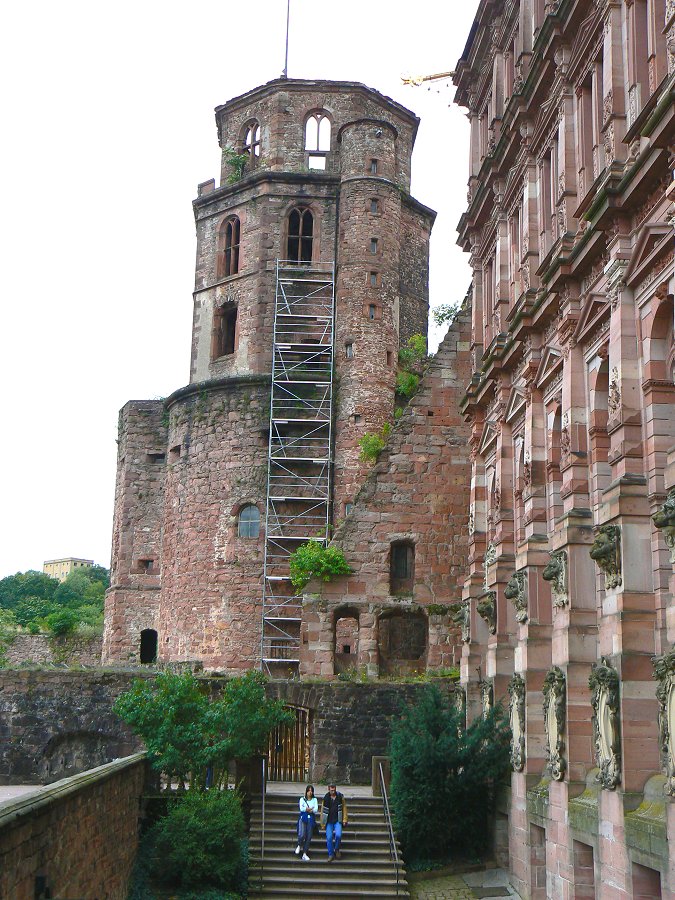

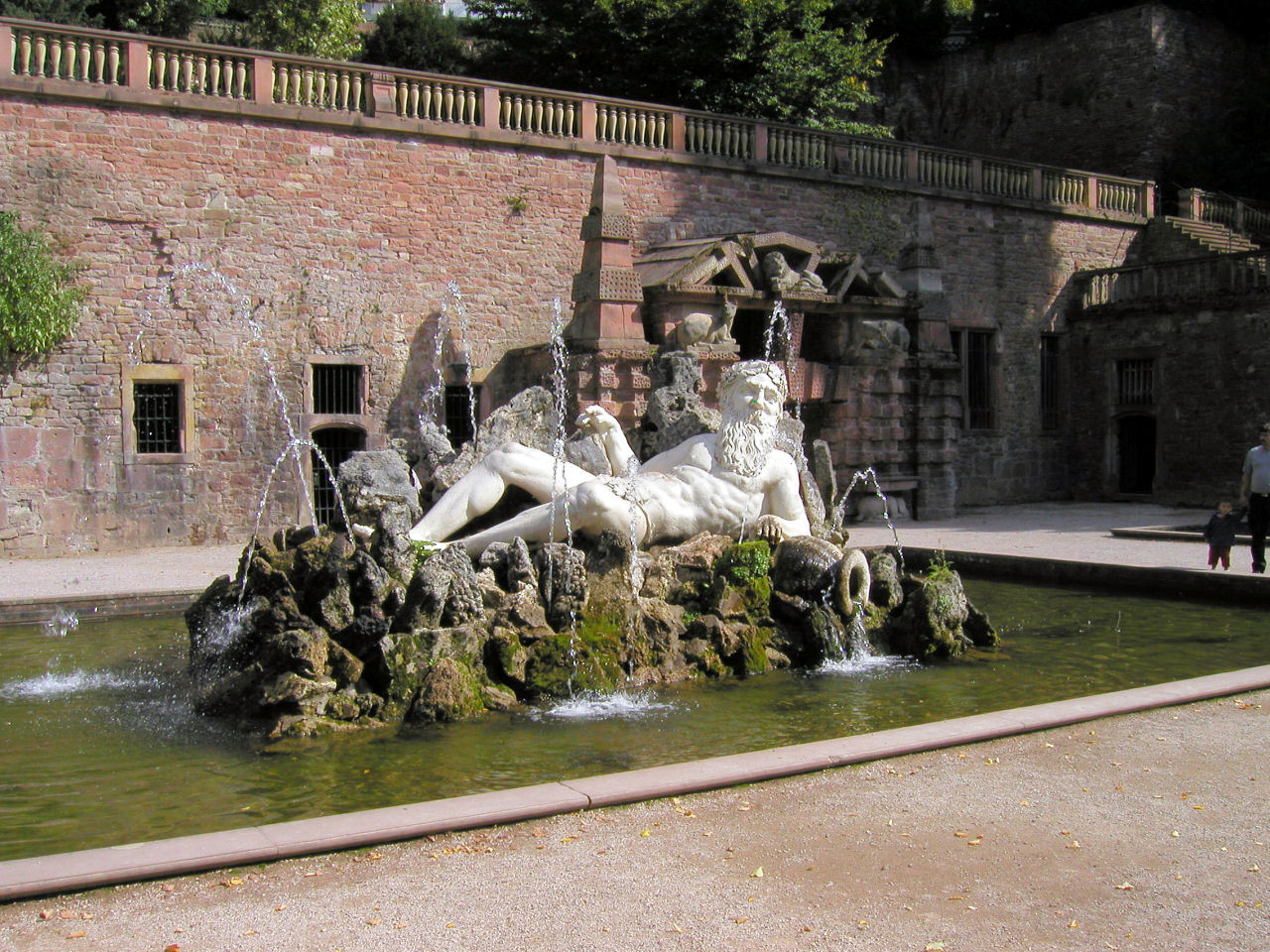
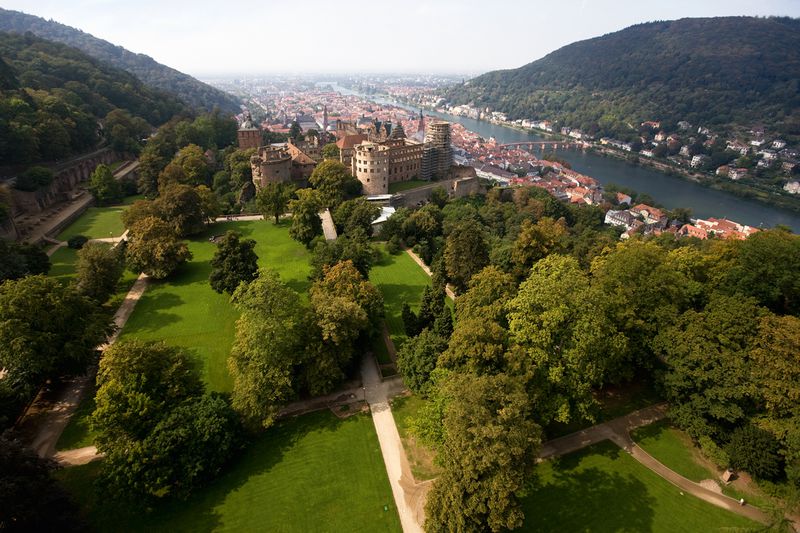
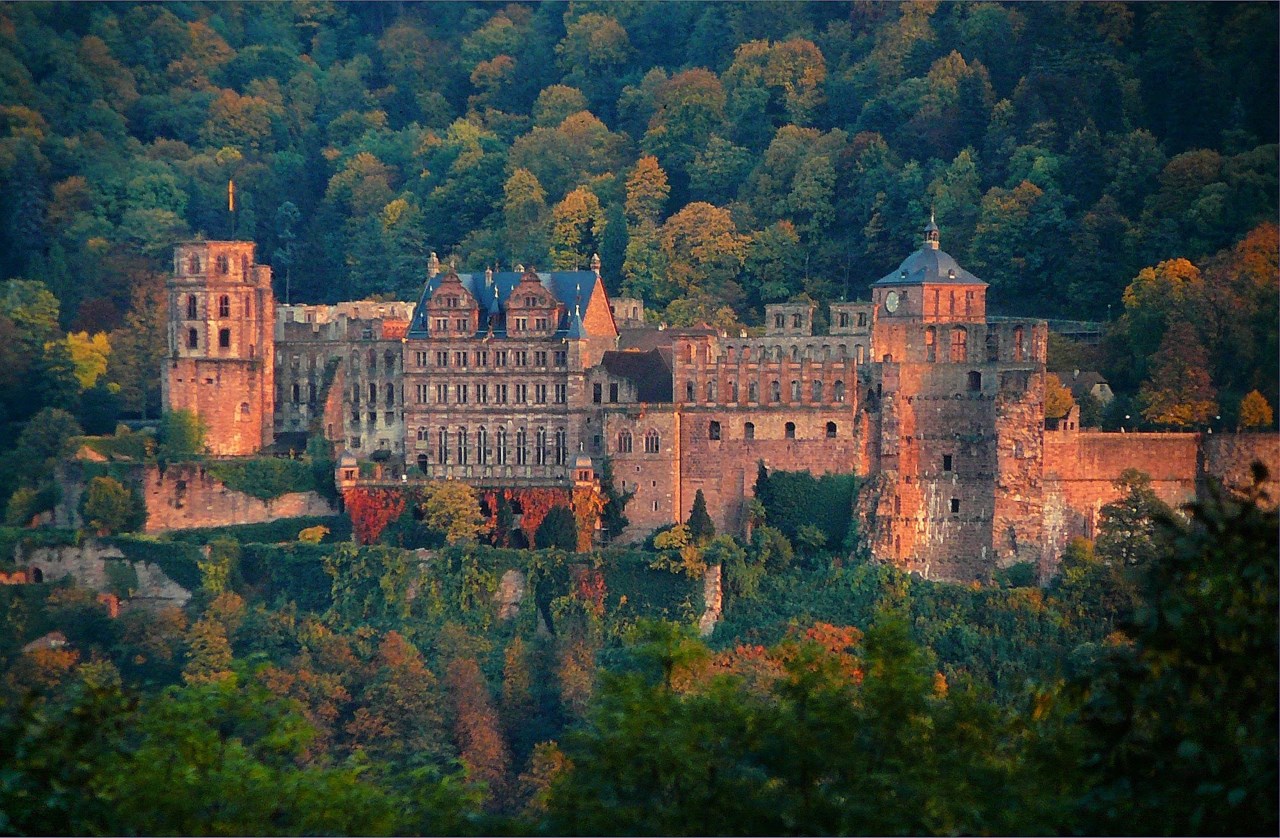
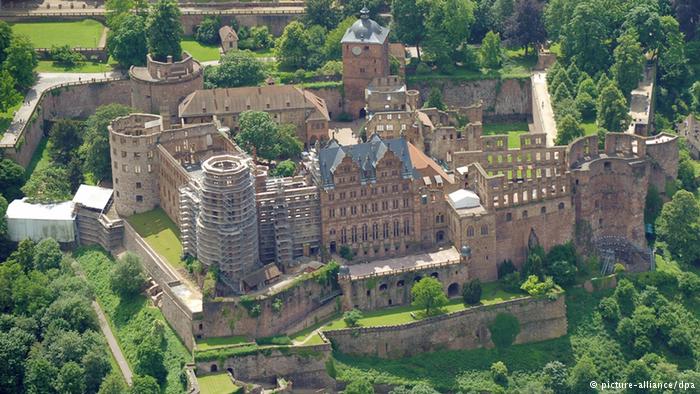
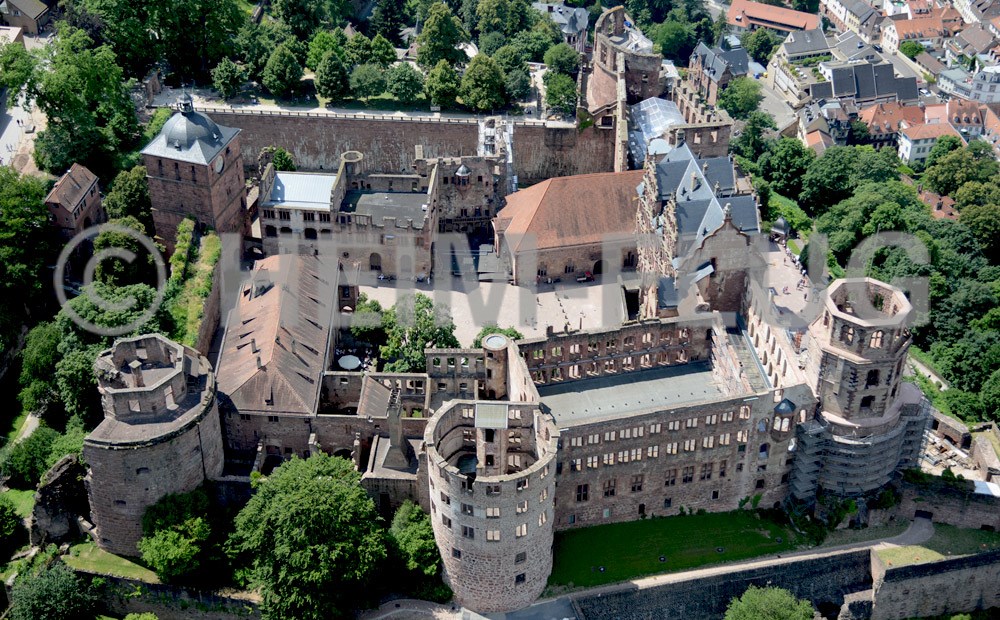
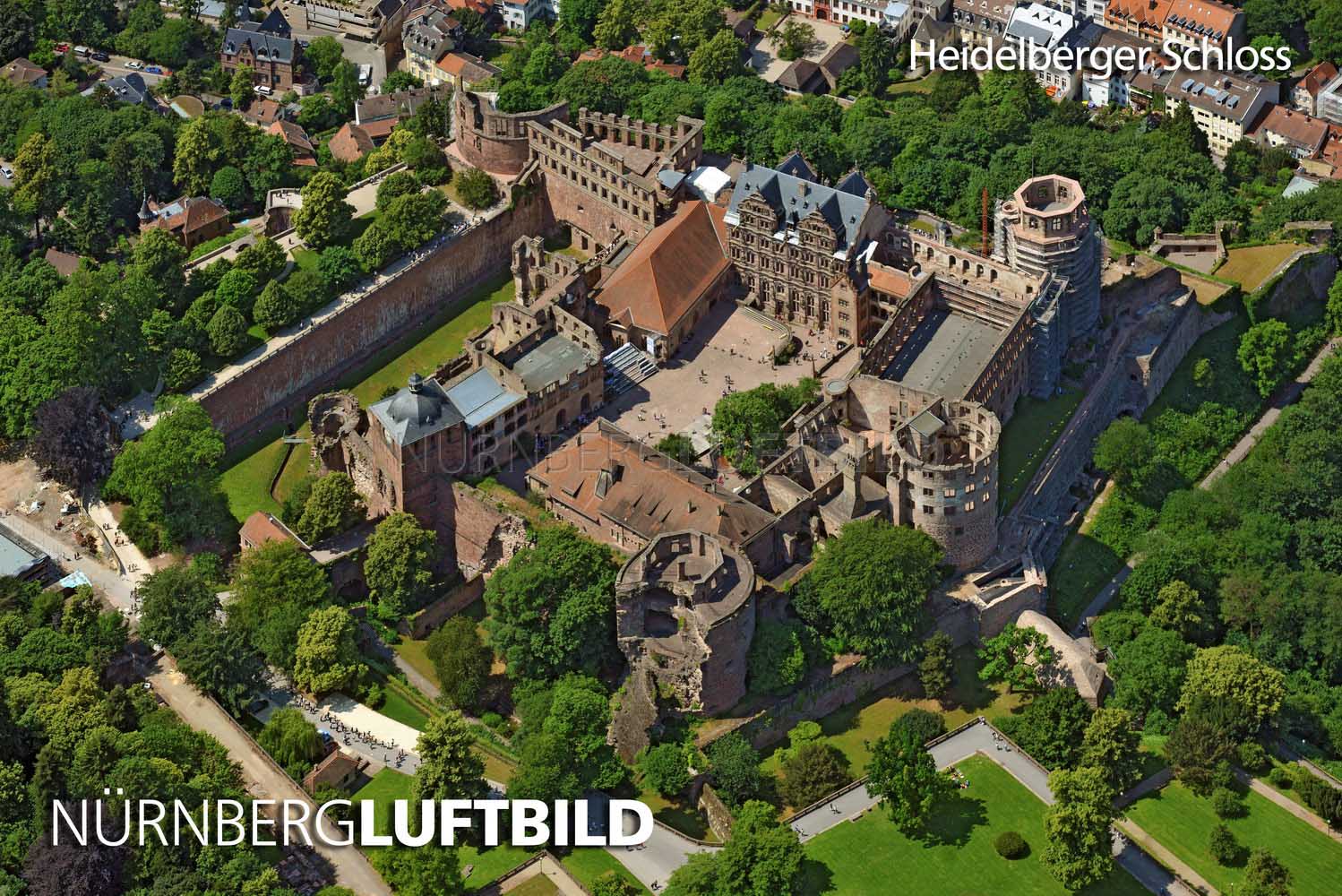
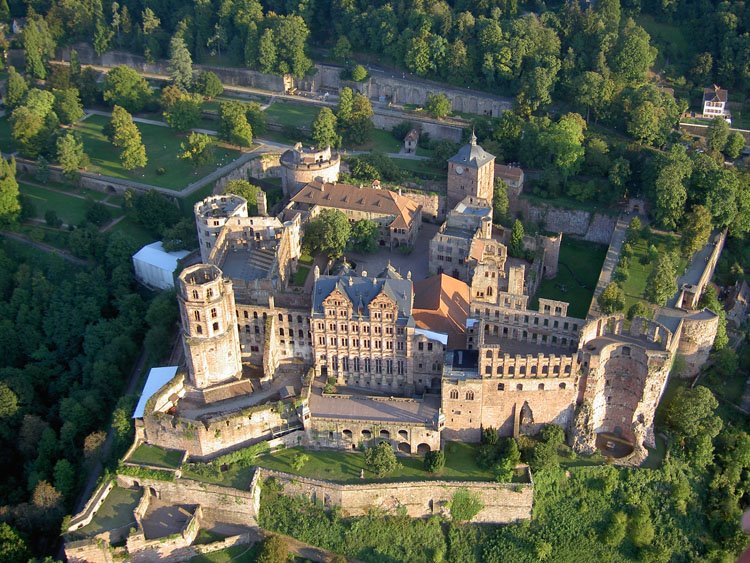
El Palacio de Heidelberg (en alemán: Heidelberger Schloss) es un famoso resto arqueológico en Alemania y monumento de Heidelberg. Las edificaciones del palacio figuran entre las más importantes estructuras renacentistas al norte de los Alpes.
El palacio ha sido reconstruido sólo parcialmente desde que fuerra derruido en los siglos XVII y XVIII. Se encuentra 80 metros arriba de la ladera septentrional del Königstuhl, y por lo tanto domina la vista de la vieja ciudad. Se llega por una estación intermedia del funicular Heidelberger Bergbahn que va desde el Kornmarkt de Heidelberg hasta la cumbre del Königstuhl.
La estructura más antigua data de antes del año 1214 y más tarde fue ampliada a dos castillos hacia 1294. En 1537, un rayo destruyó el castillo superior. Las estructuras actuales habían sido ampliadas en 1650, antes de los daños causados por guerras e incendios posteriores. En 1764, otro rayo destruyó algunas secciones reconstruidas.
http://es.wikipedia.org/wiki/Palacio_de_Heidelberg
http://en.wikipedia.org/wiki/Heidelberg_Castle
http://de.wikipedia.org/wiki/Heidelberger_Schloss
Pinche para ver las Fuentes seleccionadas
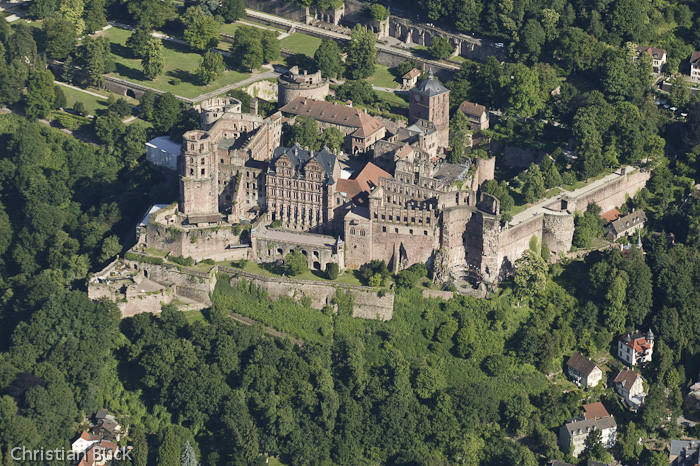
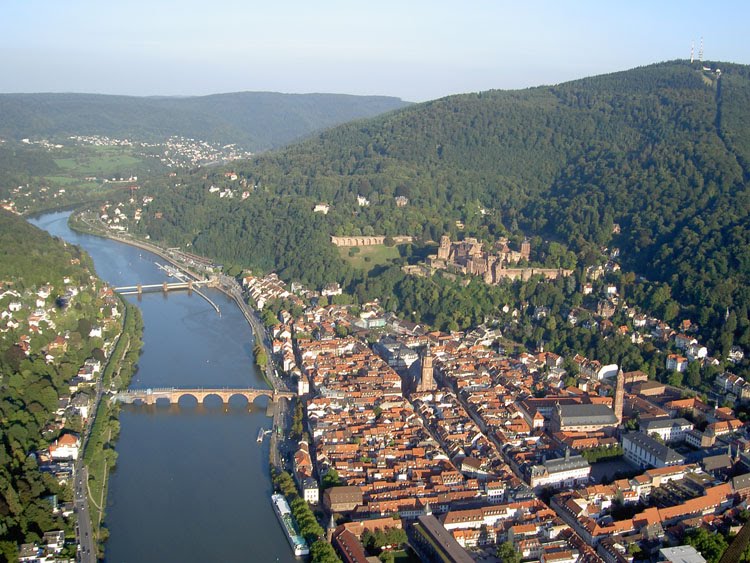
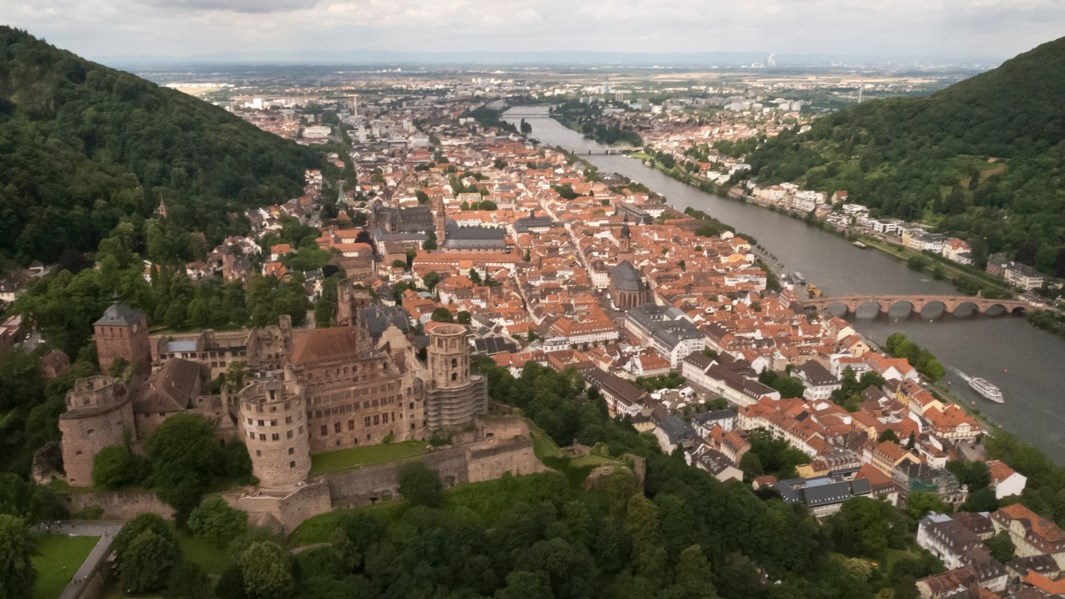
Vídeo:
Web recomendada: http://www.schloss-heidelberg.de/
Contador: 8561
Inserción: 2015-03-30 18:35:50
Lugares a visitar en un radio de 100 km (en línea recta)
Mapa de los lugares a 100 km (en línea recta)
Mostrando Registros desde el 1 hasta el 0 de un total de 0
Visitas |
Más visitados Basílica de San Marcos 152955 Catedral de Notre Dame (París) 142297 Torre de Pisa 130117 Monte Saint-Michel 99362 Presa de las Tres Gargantas 79189 |
Incorporaciones |
Comentarios hazola Cúpula de la Roca gracias me... gera Buenos Aires las mejores fotos de la mejor ciudad del... Daniel M. - BRASIL San Francisco ... PEQUE Presa Chicoasén SERA QUE ALGUIEN ME PUEDE DAR MAS INFORMACIÓN DE ESTE PROYECTO ESTUDIO EN LA UNACH Y ES PARA UN... Mery Huaca Pucllana Muy interesante, muy buena la información y... |
|
Foro |
 Tweet
Tweet


